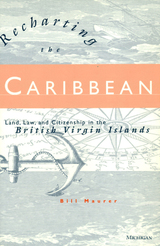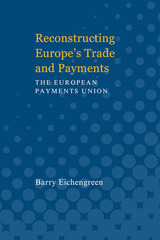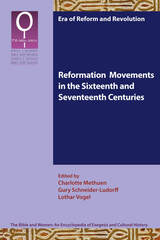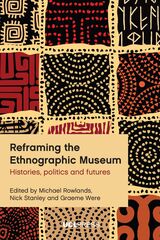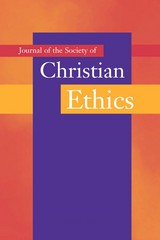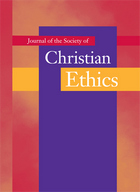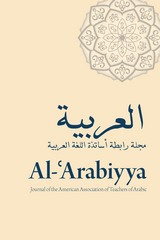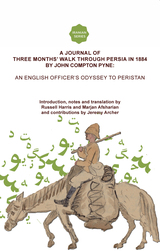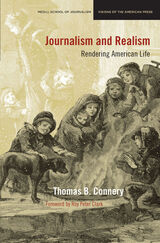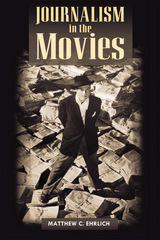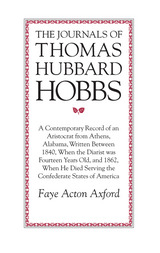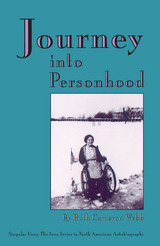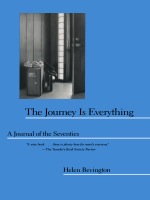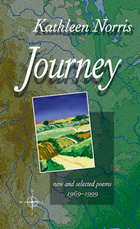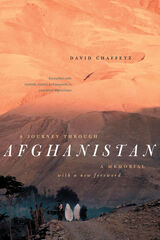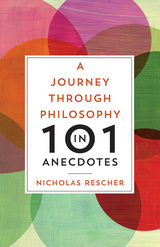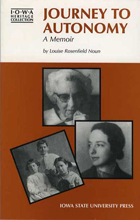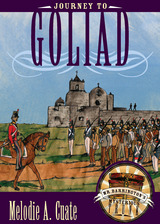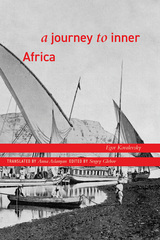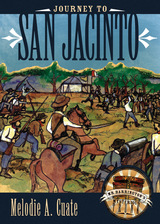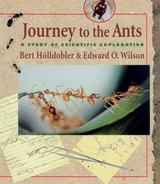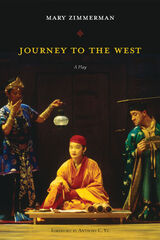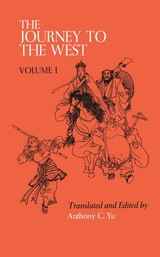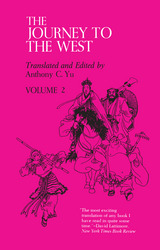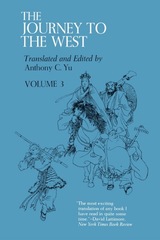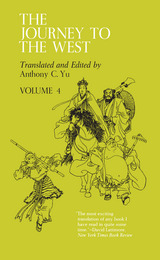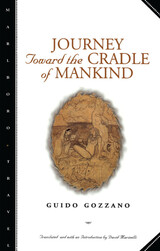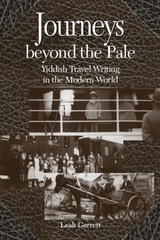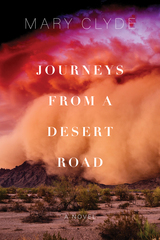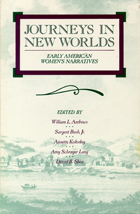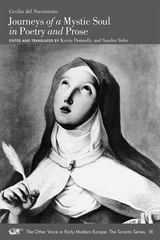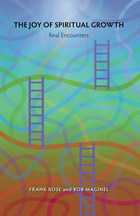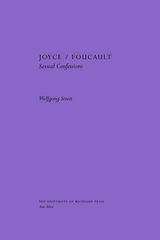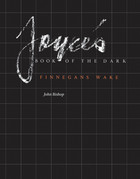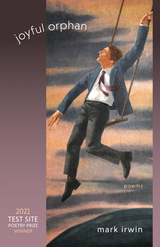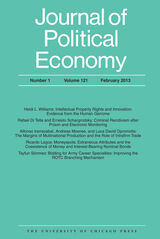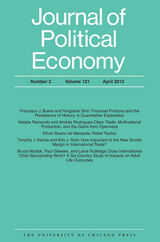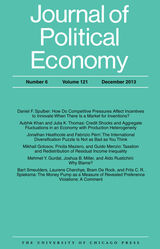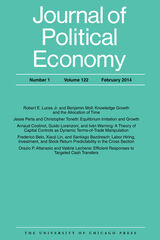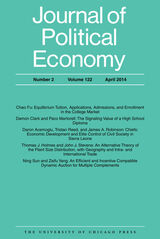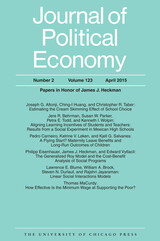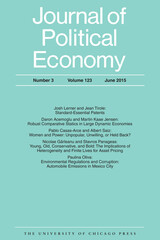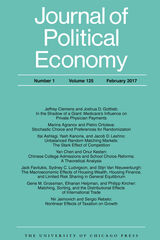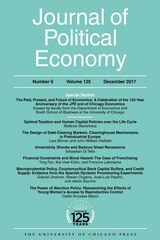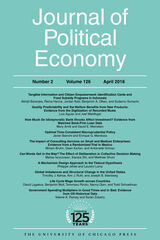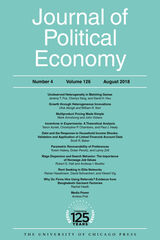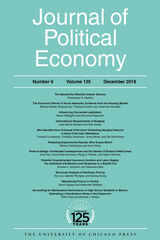Journal of the Society of Christian Ethics: Spring/Summer 2010, Volume 30, no. 1
Mary Jo Iozzio and Patricia Beattie Jung, Editors
Georgetown University Press, 2010 The Journal of the Society of Christian Ethics continues to be an essential resource for students and faculty pursuing the latest developments in Christian and religious ethics, publishing refereed scholarly articles on a variety of topics. The Journal also contains book reviews of the latest scholarship in the field.
Journal of the Society of Christian Ethics: Spring/Summer 2011, Volume 31, No. 1
Mary Jo Iozzio and Patricia Beattie Jung, Editors
Georgetown University Press The Journal of the Society of Christian Ethics continues to be an essential resource for students and faculty pursuing the latest developments in Christian and religious ethics, publishing refereed scholarly articles on a variety of topics. The Journal also contains book reviews of the latest scholarship in the field.
Journal of the Society of Christian Ethics: Spring/Summer 2012, Volume 32, No. 1
Mary Jo Iozzio and Patricia Beattie Jung, Editors
Georgetown University Press The Journal of the Society of Christian Ethics continues to be an essential resource for students and faculty pursuing the latest developments in Christian and religious ethics, publishing refereed scholarly articles on a variety of topics. The Journal also contains book reviews of the latest scholarship in the field.
Journal of the Society of Christian Ethics: Spring/Summer 2013, Volume 33, No. 1
Mary Jo Iozzio
Georgetown University Press, 2013 The Journal of the Society of Christian Ethics continues to be an essential resource for students and faculty pursuing the latest developments in Christian and religious ethics, publishing refereed scholarly articles on a variety of topics. The Journal also contains book reviews of the latest scholarship in the field.
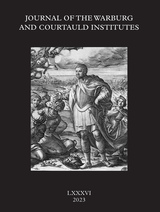 Journal of the Warburg and Courtauld Institutes, volume 86 number 1 (2023)
The University of Chicago Press
University of Chicago Press Journals, 2023 This is volume 86 issue 1 of Journal of the Warburg and Courtauld Institutes. The Journal of the Warburg and Courtauld Institutes is an interdisciplinary forum, uniting scholars specialising in cultural history including the history of art, and intellectual history including the history of ideas. It publishes articles based on new research, normally from primary sources. The subject matter encompasses intellectual themes and traditions, the arts in their various forms, religion, philosophy, science, literature and magic, as well as political and social life, from antiquity to the dawn of the contemporary era. Just as the work of the Warburg and Courtauld Institutes is known for crossing cultural borders, the JWCI provides a home for research into the many connections between European cultures and the wider world—especially the Near East, Asia and the Americas.
 Journal of the Warburg and Courtauld Institutes, volume 87 number 1 (2024)
The University of Chicago Press
University of Chicago Press Journals, 2024 This is volume 87 issue 1 of Journal of the Warburg and Courtauld Institutes. The Journal of the Warburg and Courtauld Institutes is an interdisciplinary forum, uniting scholars specialising in cultural history including the history of art, and intellectual history including the history of ideas. It publishes articles based on new research, normally from primary sources. The subject matter encompasses intellectual themes and traditions, the arts in their various forms, religion, philosophy, science, literature and magic, as well as political and social life, from antiquity to the dawn of the contemporary era. Just as the work of the Warburg and Courtauld Institutes is known for crossing cultural borders, the JWCI provides a home for research into the many connections between European cultures and the wider world—especially the Near East, Asia and the Americas.
A Journal of Three Months’ Walk in Persia in 1884 by Captain John Compton Pyne
Marjan Afsharian
Amsterdam University Press, 2017 In 1884 an obscure British soldier, having finished his tour of duty in India, decided to make a detour on his trip home in order to spend three months crossing Persia unaccompanied except for the local muleteers. Among his accoutrements he packed a small leather-bound sketchbook in which he not only wrote a journal but in which he also added accomplished and charming water-colour illustrations. The authors’ introduction contextualises this trip made in 1884 against the background of Persianate influence in British culture, and the general cultural background of late Victorian Britain is presented as the subliminal driver behind a young man’s desire to explore, and illustrate, an already discovered country – Persia.
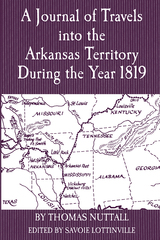 A Journal of Travels into the Arkansas Territory During the Year 1819
Thomas Nuttall
University of Arkansas Press, 1999 This is the famous naturalist Thomas Nuttall's only surviving complete journal of his American scientific explorations. Covering his travels in Arkansas and what is now Oklahoma, it is pivotal to an understanding of the Old Southwest in the early nineteenth century, when the United States was taking inventory of its acquisitions from the Louisiana Purchase. The account follows Nuttall's route from Philadelphia to Pittsburg, down the Ohio River to its mouth, then down the Mississippi River to the Arkansas Post, and up the Arkansas River with a side trip to the Red River. It is filled with valuable details on the plants, animals, and geology of the region, as well as penetrating observations of the resident native tribes, the military establishment at Fort Smith, the arrival of the first governor of Arkansas Territory, and the beginnings of white settlement. Originally published in 1980 by the University of Oklahoma Press, this fine edited version of Nuttall's work boasts a valuable introduction, notes, maps, and bibliography by Savoie Lottinville. The editor provided common names for those given in scientific classification and substituted modern genus and species names for the ones used originally by Nuttall. The resulting journal is a delight to read for anyone—historian, researcher, visitor, resident, or enthusiast.
Journal of Washington Irving, 1823-1824
Washington Irving
Harvard University Press An exact reproduction of a manuscript Journal kept by Washington Irving during about thirteen months of his life in Germany, Holland, France, and England. Forty and forty-one years old, Irving is seen through his own detailed record in the society of Paris, with English men of letters such as Samuel Rogers and Thomas Moore. He describes his literary projects in the period just following the successes of The Sketch Book and Bracebridge Hally and reveals his sources methods in writing his next book, Tales of a Traveller. The Journal is of peculiar value to the student of American literature in that it gives a minute account of Irving’s life during this important period.
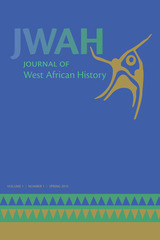 Journal of West African History 1, no. 1
Nwando Achebe
Michigan State University Press Journals, 2015 IN THIS ISSUE
Editor's Note
Nwando Achebe, "The Birth of a New Journal"
Articles
Jan Jansen, "In Defense of Mali’s Gold: The Political and Military Organization of the Northern Upper Niger, c. 1650–c. 1850"
Ralph A. Austen, "Finding the Historical Wangrin or the Banality of Virtue"
Claire Robertson, "We Must Overcome: Genealogy and Evolution of Female Slavery in West Africa"
Trevor R. Getz, Lindsay Ehrisman, "The Marriages of Abina Mansah: Escaping the Boundaries of "Slavery" as a Category in Historical Analysis"
David Robinson, "Retrospective: Reflections on Legitimation and Pedagogy in the "Islamic Revolutions" of West Africa on the Frontiers of the Islamic World"
Moses Ochonu, "Caliphate Expansion and Sociopolitical Change in Nineteenth-Century Lower Benue Hinterlands"
Book Reviews
Carola Lentz, Land, Mobility, and Belonging in West Africa, Reviewed by Assan Sarr
Elizabeth Wrangham, Ghana during the First World War: The Colonial Administration of Sir Hugh Clifford, Reviewed by Kwame Essien
Raymond E. Dumett, Imperialism, Economic Development and Social Change in West Africa, Reviewed by Jeffrey S. Ahlman
John Iliffe, Obasanjo, Nigeria and the World, Reviewed by Hakeem Ibikunle Tijani
Toyin Falola and Saheed Aderinto, Nigeria, Nationalism, and Writing History, Reviewed by Philip S. Zachernuk
David Max Brown and Zola Maseko, The Manuscripts of Timbuktu; Shamil Jeppie and Souleymane Bachir Diagne, The Meanings of Timbuktu; Alexandra Huddleston, 333 Saints: A Life of Scholarship in Timbuktu, Reviewed by David E. Skinner
Susan Z. Andrade, The Nation Writ Small: Africa Fictions and Feminisms, 1958–1988, Reviewed by Anne V. Adams
Danny Hoffman, The War Machines: Young Men and Violence in Sierra Leone and Liberia, Reviewed by Douglas Thomas
 Journal of West African History 1, no. 2
Nwando Achebe
Michigan State University Press Journals, 2015 IN THIS ISSUE
Editor's Note
Nwando Achebe, "Nkiruka: the Best is Still to Come"
Articles
Mariano Pavanello, “Foragers or Cultivators? A Discussion of Wilks’s ‘Big Bang’ Theory of Akan History”
Jonathan Reynolds, “Stealing the Road: Colonial Rule and the Hajj from Nigeria in the Early Twentieth Century”
Simon Ottenberg, “Conflicting Interpretations in the Biography of a Modern Artist of African Descent”
Elisha P. Renne, “Small-Scale and Industrial Gold Mining Histories in Nangodi, Upper East Region, Ghana”
Retrospectives
Merrick Posnansky, “Begho: Life and Times”
Ifi Amadiume, “Of Kola Nuts, Taboos, Leadership, Women’s Rights, and Freedom: New Challenges from Chinua Achebe’s There Was a Country: A Personal History of Biafra”
Book Reviews
ESSAY: Herbert Ekwe-Ekwe, "A Required Reference for Understanding Contemporary Africa"
Hollywood’s Africa after 1994, reviewed by David Afriyie Donkor
The Great African Slave Revolt of 1825: Cuba and the Fight for Freedom in Matanzas, reviewed by Madalina Florescu
Globalization and Sustainable Development in Africa, reviewed by Irene Dzidzor Darku
Our New Husbands Are Here: Households, Gender, and Politics in a West African State from the Slave Trade to Colonial Rule, reviewed by Saheed Aderinto
The Autobiography of an African Princess, reviewed by Paul Alkebulan
Muslims and New Media in West Africa: Pathways to God, reviewed by Reginold A. Royston
 Journal of West African History 2, no. 1
Nwando Achebe
Michigan State University Press Journals, 2016 IN THIS ISSUE
Editor's Note
Nwando Achebe, A Good Habit that Lasts More than a Year May Turn into a Custom
Articles
Pierluigi Valsecchi, "The Fall of Kaku Aka: Social and Political Change in the Mid-Nineteenth- Century Western Gold Coast"
David E. Skinner, "The Influence of Islam in Sierra Leone History: Institutions, Practices, and Leadership"
Erik S. McDuffie, "'A New Day Has Dawned for the UNIA’: Garveyism, the Diasporic Midwest, and West Africa, 1920–80"
Sabine Jell-Bahlsen, "Crime, Community, and Human Rights in Southeastern Nigeria, Then and Now"
Cheikh Anta Babou, "Negotiating the Boundaries of Power: Abdoulaye Wade, the Muridiyya, and State Politics in Senegal, 2000–2012"
Book Reviews
Deep Roots: Rice Farmers in West Africa and the African Diaspora, Reviewed by Dianna Bell
Bitter Roots: The Search for Healing Plants in Africa, Reviewed by Ama Boakyewa
Metaphor and the Slave Trade in West African Literature, Reviewed by Joseph McLaren
Chiefs, Priests, and Praise-Singers: History, Politics, and Land Ownership in Northern Ghana, Reviewed by James Lance
Chocolate Islands: Cocoa, Slavery, and Colonial Africa, Reviewed by Lumumba H. Shabaka
Highlife Saturday Night: Popular Music and Social Change in Urban Ghana, Reviewed by Gavin Webb
The Problem of Slavery as History: A Global Approach, Reviewed by Daniel B. Domingues da Silva
When Sex Threatened the State: Illicit Sexuality, Nationalism, and Politics in Colonial Nigeria, 1900–1958, Reviewed by Jaqueline-Bethel Mougoué
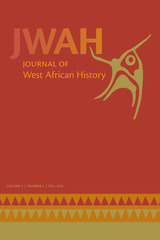 Journal of West African History 2, no. 2
Nwando Achebe
Michigan State University Press Journals, 2016 IN THIS ISSUE
Editor's Note
Nwando Achebe, "Nkolika—Recalling is Supreme"
Articles
Steven Pierce, "The Invention of Corruption: Political Malpractice and Selective Prosecution in Colonial Northern Nigeria"
Robert M. Baum, "Prophetic Critiques of Colonial Agricultural Schemes: The Case of Alinesitoué Diatta in Vichy Senegal"
Mohammed Bashir Salau, Harmony O’Rourke, "The Life and Experiences of Sa`id Ibn Hayatu, a Mahdist Leader: New Findings from the Buea Archive"
Nozomi Sawada, "Selecting Those ‘Worthy’ of Remembering: Memorialization in Early Lagos Newspapers"
Victoria Ellen Smith, "Secrets of West African Slave Ancestry: Fante Strategies of Silence and the Didactic Narrative in Ghanaian Literature"
Book Reviews
Elem Kalabari of the Niger Delta: The Transition from Slave to Produce Trading under British Imperialism, reviewed by Joe Davey
The Scattered Family: Parenting, African Migrants, and Global Inequality, Reviewed by Tiffany A. Flowers
Tony Allen: An Autobiography of the Master Drummer of Afrobeat, reviewed by Dawne Y. Curry
African European Trade in the Atlantic World: The Western Slave Coast circa 1550 to 1885, reviewed by Robert Hanserd
 Journal of West African History 3, no. 1
Nwando Achebe
Michigan State University Press Journals, 2017 IN THIS ISSUE
Editor's Note
Nwando Achebe, "Osonduagwuike—There Is No Boredom in the Pursuit of Life Happiness"
Articles
Katrina H. B. Keefer, "Group Identity, Scarification, and Poro among Liberated Africans in Sierra Leone, 1808–1819"
Ndubueze L. Mbah, "Performing Ogaranya: Kalu Ezelu Uwaoma, Male Slavery, and Freedom Politics in Southeastern Nigeria, c. 1860–1940"
Marcus Filippello," Settling Ọhọri: Reassessing Rebellion, Gender, and Foundation 'Myths' in Colonial Dahomey"
Ellen R. Feingold, "International Currency Counterfeiting Schemes in Interwar West Africa"
Retrospective
Folu F. Ogundimu, "Historical Antecedents and Implications of Polio Outbreaks in Northern Nigeria"
Book Reviews
Muslim Families in Global Senegal: Money Takes Care of Shame, reviewed by Brandon D. Lundy
Crossing the Color Line: Race, Sex and the Contested Politics of Colonialism in Ghana, reviewed by Clifford C. Campbell
Children and Childhood in Nigerian Histories, reviewed by Robin P. Chapdelaine
Transmigrational Writings between the Maghreb and Sub-Saharan Africa: Literature, Orality, Visual Arts, reviewed by Bala Saho
Colonialism by Proxy: Hausa Imperial Agents and Middle Belt Consciousness in Nigeria, reviewed by John Straussberger
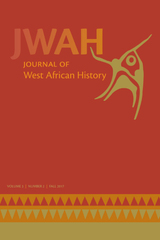 Journal of West African History 3, no. 2
Nwando Achebe
Michigan State University Press Journals, 2017 IN THIS ISSUE
Editor's Note
Nwando Achebe, "Uwa Umu-Nwanyi: The World of Women, The World of Women’s Children"
Articles
Timothy D. L. Nevin, "In Search of the Historical Madam Suakoko: Liberia’s Renowned Female Kpelle Chief"
Andrew Apter, "Queer Crossings: Kinship, Marriage, and Sexuality in Igboland and Carriacou"
Jacqueline-Bethel Tchouta Mougoué, "Intellectual Housewives, Journalism, and Anglophone Nationalism in Cameroon, 1961–1972"
Conversations
Lisa A. Lindsay, "Male Daughters, Female Husbands at Thirty"
Leslie Anne Hadfield, "Understanding African Marriage and Family Relations from South Africa to the United States"
Marion G. Mendy, Assan Sarr, "The Ambiguity of Gender: Ifi Amadiume and the Writing of Gender History in Igboland"
Lorelle Semley, "When We Discovered Gender: A Retrospective on Ifi Amadiume’s Male Daughters, Female Husbands: Gender and Sex in an African Society"
Abosede George, “A Philosopher with a Plan: Reflections on Ifi Amadiume’s Male Daughters, Female Husbands"
Ifi Amadiume, "Gender Field Experience, Method and Theory"
The Teaching Scholar
Judith A. Byfield, "Becoming Classic: 'Sitting on a Man' at Forty-Five"
Akosua Adomako Ampofo, "'Sitting on a Man': Forty Years Later"
Ndubueze L. Mbah, "Judith Van Allen, 'Sitting on a Man,' and the Foundation of Igbo Women’s Studies"
Denise Walsh, "Making It Ethical to Study Africa: The Enduring Legacies of 'Sitting on a Man'"
Emily Lynn Osborn, "Man Sitting with Judith Van Allen"
Lynda R. Day, "Judith Van Allen and the Impact of Her Article '"Sitting on a Man": Colonialism and the Lost Political Institutions of Igbo Women' in the Classroom"
Judith Van Allen, "Politics and the Writing of 'Sitting on a Man'"
Book Reviews
Shi’i Cosmopolitanisms in Africa: Lebanese Migration and Religious Conversion in Senegal, reviewed by Shobana Shankar
Africa and France: Postcolonial Cultures, Migration, and Racism, reviewed by Abou B. Bamba
“Life Not Worth Living”: Nigerian Petitions Reflecting an African Society’s Experiences during World War II, reviewed by Oliver Coates
 Journal of West African History 4, no. 1
Nwando Achebe
Michigan State University Press Journals, 2018 IN THIS ISSUE:
Editor's Introduction
Nwando Achebe, “Azubuike—The Past Is Our Strength”
Articles
Alessandra Brivio, “Gorovodu: The Genesis of a ‘Hausa Vodun’”
Naaborko Sackeyfio-Lenoch, “Women’s International Alliances in an Emergent Ghana”
Jan Jansen, Graeme Counsel, and Brahima Camara, “Sex, Drugs, and Female Agency: Why Siramori Diabaté’s Song ‘Nanyuman’ Was Such a Success in Mali and Guinea”
Jennifer Lofkrantz, “Intellectual Traditions, Education, and Jihad: The (Non)Parallels between the Sokoto and Boko Haram Jihads”
Tamba E. M’bayo, “Ebola, Poverty, Economic Inequity and Social Injustice in Sierra Leone”
Book Reviews
John N. Oriji, Political Organization in Nigeria since the Late Stone Age: A History of the Igbo People, reviewed by Ndubueze L. Mbah
Mary Kingsley, Travels in West Africa, reviewed by David Amponsah
Kwame Essien, Brazilian-African Diaspora in Ghana: The Tabom, Slavery, Dissonance of Memory, Identity, and Locating Home, reviewed by Juan Diego Díaz
 Journal of West African History 4, no. 2
Nwando Achebe
Michigan State University Press Journals, 2018 Editor's Introduction
Nwando Achebe, “A Spectator Cannot Stand in One Position to Appreciate the Beauty of the Masquerade Dance—Igbo Proverb”
Articles
Nathan Carpenter, “Ransom as Political Strategy: Captivity beyond Commercial Transaction on the Upper Guinea Coast in the Late Nineteenth and Early Twentieth Centuries”
Kalala Ngalamulume, “The ‘Devès Affair’ in Saint-Louis-du-Senegal: A Critical Assessment of the Sources, 1902–1911”
Stacey Hynd, “Pickpockets, Pilot Boys, and Prostitutes: The Construction of Juvenile Delinquency in the Gold Coast [Colonial Ghana], c. 1929–57”
Kevin S. Fridy, “A Freezing Moment in Ghana’s Party System: How Two Thorns in Nkrumah’s Side Framed Elections in the Fourth Republic”
Beverly Mack, “Fodiology: African American Heritage Connections to West African Islam”
Book Reviews
West African Warfare in Bahia and Cuba: Soldier Slaves in the Atlantic World, 1807–1844, reviewed by Crystal Nicole Eddins
Muslim Interpreters in Colonial Senegal, 1850–1920: Mediations of Knowledge and Power in the Lower and Middle Senegal River Valley, reviewed by Joseph Fronczak
Understanding West Africa’s Ebola Epidemic: Towards a Political Economy, reviewed by Matthew Newsom Kerr
 Journal of West African History 5, no. 1
Nwando Achebe
Michigan State University Press Journals, 2019 In This Issue
Editor's Introduction
Nwando Achebe, “When a Bird Builds Its Nest, It Uses the Feathers of Other Birds”
Articles
Olatunji Ojo, “Performing Trauma: The Ghosts of Slavery in Yoruba Music and Ritual Dance”
Henryatta Ballah, “Liberia: A Colonized Nation and the Role of English in that Process”
Emmanuel Ababio Ofosu-Mensah, “The Politics of Property Rights: The Case of Akyem Abuakwa, Ghana (1912–1943)”
Katrin Schulze, “The Wild Bunch: Cowboy Clubs, Gangs, and Societies in Nigeria”
Tony Yeboah, “Phoenix Rise: A History of the Architectural Reconstruction of the Burnt City of Kumase, 1874–1960”
Book Reviews
Olúfémi Táíwò, Africa Must Be Modern: A Manifesto, reviewed by Andrew Kettler
Zachary Valentine Wright, Living Knowledge in West African Islam: The Sufi Community of Ibrahim Niasse, reviewed by David Owusu-Ansah
Kate Skinner, The Fruits of Freedom in British Togoland: Literacy, Politics and Nationalism, 1914–2014, reviewed by Kevin E. Grimm
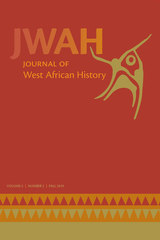 Journal of West African History 5, no. 2
Nwando Achebe
Michigan State University Press Journals, 2019 In This Issue
Editor's Introduction
Harry Odamtten and Trevor R. Getz, “Sankofa and the Nation-State”
Articles
Lacy S. Ferrell, “Building for Students: School Design and Educational Priorities in Colonial Ghana”
Jarvis L. Hargrove, “Ashanti Pioneer: Coverage of Growing Political Developments in the Gold Coast, 1946–1949”
Carina Ray, “Interracial Intimacies and the Gendered Optics of African Nationalism in the Colonial Metropole”
Nana Osei-Opare, “Uneasy Comrades: Postcolonial Statecraft, Race, and Citizenship, Ghana–Soviet Relations, 1957–1966”
Edem Adotey, “A Matter of Apostrophe? Founder’s Day, Founders’ Day, and Holiday Politics in Contemporary Ghana”
Book Reviews
Jeffrey S. Ahlman, Living with Nkrumahism: Nation, State, and Pan-Africanism in Ghana, reviewed by D. Zizwe Poe
Saheed Aderinto, Guns and Society in Colonial Nigeria: Firearms, Culture, and Public Order, reviewed by Samuel Fury Childs Daly
Robert M. Baum, West Africa’s Women of God: Alinesitoué and the Diola Prophetic Tradition, reviewed by Ashley Fent
Luis Nicolau Parés, O rei, o pai e a morte: a religião Vodum na antiga Costa dos Escravos na África Ocidental, reviewed by Vanicléia Silva Santos
Granny Nanny Cultural Group, Granny Nanny Come Oh: Jamaican Maroon Kromanti and Kumina Music and Other Oral Traditions, reviewed by Tracey Mia Stewart
 Journal of West African History 6, no. 1
Nwando Achebe
Michigan State University Press Journals, 2020 In This Issue
Editor's Introduction
Nwando Achebe, “People Have Succeeded in Overcoming Tremendous Space, But Not the Distance between One Person and Another”
Articles
Ernest Sasu Kwame Sewordor, “‘The Humble Petition of Johana Nyewuame Bekrah’: Becoming/Being Gã, Straddling ‘Spaces,’ and Negotiating Boundaries in the Gold Coast Christian ‘Model Town’ (Abokobi), ca. 1860–1980
Timothy D. L. Nevin, “Liberia’s Belle Yella Prison Camp (1910–1990): Repression, Stigma, and Forced Labor in the Heart of the Rainforest”
Keri Lambert, “‘In the Nature of a Crusade’: Wartime Extraction and the Seeds of Industrialization in the Gold Coast”
Ambe J. Njoh, Esther P. Chie, and Liora Bigon, “CDC Company Towns in Cameroon: A Case of Shaping Built Space to Articulate Power and Social Control in Colonial and Postcolonial Perspectives”
Alexander Keese, “Petitioning about the Revolutionary Nation: Social History and Communication under the Early Kérékou Regime in Benin, 1975–1977”
Book Reviews
Michael A. Gomez, African Dominion: A New History of Empire in Early and Medieval West Africa, reviewed by Jody A. Benjamin
Toby Green, A Fistful of Shells: West Africa from the Rise of the Slave Trade to the Age of Revolution, reviewed by Katharina A. Oke
Sandra E. Greene, Slave Owners of West Africa: Decision Making in the Age of Abolition, reviewed by J. M. Davey
Xavier Diatta, Fiju di Terra. La crise casamançaise racontée à mes enfants, reviewed by Pape Chérif Bertrand Bassène
Henry B. Lovejoy, Prieto: Yorùbá Kingship in Colonial Cuba during the Age of Revolutions, reviewed by Evan C. Rothera
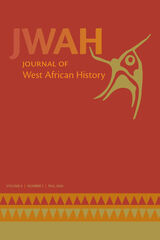 Journal of West African History 6, no. 2
Nwando Achebe
Michigan State University Press Journals, 2020 In This Issue
Editor’s Introduction
Vincent Hiribarren, “African History Will Make Us Breathe”
Articles
Klas Rönnbäck, “The Built Environment of the Precolonial West African Coast: Materials, Functions, and Housing Standards”
Ismail Warscheid, “The West African Jihād Movements and the Islamic Legal Literature of the Southwestern Sahara (1650–1850)”
Holly Rose Ashford, “Modern Motherhood, Masculinity, and Family Planning in Ghana, 1960–75”
Retrospective
Jan Jansen and James R. Fairhead, “The Mande Creation Myth, by Germaine Dieterlen, as a Historical Source for the Mali Empire”
Conversations
Kwasi Konadu, “COVID-19 and Caution for Historians: Views from a Place in West Africa”
Karen Flint, “‘Africa Isn’t a Testing Lab’: Considering COVID Vaccine Trials in a History of Biomedical Experimentation and Abuse”
Alhaji U. Njai, “COVID-19 Pandemic at the Intersection of Ebola, Global Leadership, and the Opportunity to Decolonize the Political Economy of Sierra Leone”
Helen Tilley, “COVID-19 across Africa: Colonial Hangovers, Racial Hierarchies, and Medical Histories”
Book Reviews
Harry N. K. Odamtten, Edward W. Blyden’s Intellectual Transformations: Afropublicanism, Pan-Africanism, Islam, and the Indigenous West African Church, reviewed by Tracy Keith Flemming
Jonathan E. Robins, Cotton and Race across the Atlantic: Britain, Africa, and America, 1900–1920, reviewed by Andrew James Kettler
Emily S. Burrill, States of Marriage: Gender, Justice, and Rights in Colonial Mali, reviewed by Harmony O’Rourke
Katherine Ann Wiley, Work, Social Status, and Gender in Post-Slavery Mauritania, reviewed by Erin Pettigrew
Cassandra Mark-Thiesen, Mediators, Contract Men, and Colonial Capital: Mechanized Gold Mining Colony, 1879–1909, reviewed by Andrea Ringer
 Journal of West African History 7, no. 1
Nwando Achebe
Michigan State University Press Journals, 2021 In This Issue
Editors’ Introduction
Ndubueze L. Mbah and Saheed Aderinto, “‘The Ghost of Macaulay’: Nigeria’s Anticolonialism and Struggle for Independence”
Articles
Mark Reeves, “A Gilded Cage? Nnamdi Azikiwe’s Pan-Africanism as Governor-General of Nigeria, 1960–63”
Rouven Kunstmann, “Fashioning Nationalism and the Shaping of the Public Sphere in 1950s Nigeria”
Jonathan T. Reynolds, “‘We Own Kano and Kano Owns Us’: Politics, Place, and Identity in Independence-Era Kano”
Robin P. Chapdelaine, “‘He remains a second person no matter the age’: Historical and Contemporary Perceptions of Childlessness and Adoption in Nigeria”
Retrospective
Agbenyega Adedze, “Nigeria: A Philatelic Essay”
Book Reviews
Mohammed Bashir Salau, Plantation Slavery in the Sokoto Caliphate: A Historical and Comparative Study, reviewed by Bekeh Utietiang Ukelina
Jacqueline-Bethel Tchouta Mougoué, Gender, Separatist Politics, and Embodied Nationalism in Cameroon, reviewed by Andrew Kettler
Bala Saho, Contours of Change: Muslim Courts, Women, and Islamic Society in Colonial Bathurst, the Gambia, 1905–1965, reviewed by Sara Katz
Alusine Jalloh, Muslim Fula Business Elites and Politics in Sierra Leone, reviewed David Newman Glovsky
Abou B. Bamba, African Miracle, African Mirage: Transnational Politics and the Paradox of Modernization in Ivory Coast, reviewed by Kevin E. Grimm
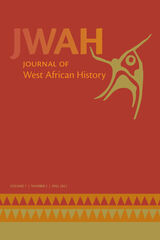 Journal of West African History 7, no. 2
Nwando Achebe
Michigan State University Press Journals, 2021 In This Issue
Editor's Introduction
Reckoning with the Development Episteme: Failed Plans, Built Environment, and Visions of Nigeria’s Decolonization
Ndubueze L. Mbah
Articles
Grave Reservations: Nigerian Literature and Histories of “European Reservations” during Decolonization
Tim Livsey
Making a Nation Modern: CIS and Nigeria’s First National Development Plan
Bekeh Utietiang Ukelina
Lagoon: Hidden Depths to Housing Schemes across Independence in Lagos, Nigeria
Mark Duerksen
The Roots of “Apes Obey!”: Labor and Innovation in Nigerian Railway History
Oluwatoyin Oduntan
Brazilian-Style Architecture and Lagosian Modernity
Abosede George
Book Reviews
Emergent Masculinities: Gendered Power and Social Change in the Biafran Atlantic Age, by Ndubueze L. Mbah
Reviewed by Jennifer Lofkrantz
Pentecostal Republic: Religion and the Struggle for State Power in Nigeria, by Ebenezer Obadare
Reviewed by Paul Grant
African Print Cultures: Newspapers and Their Publics in the Twentieth Century, edited by Derek R. Peterson, Emma Hunter, and Stephanie Newell
Reviewed by Niklas Hultin
Nigeria and World War II: Colonialism, Empire, and Global Conflict, by Chima J. Korieh
Reviewed by Judith A. Byfield
Amílcar Cabral: A Nationalist and Pan-Africanist Revolutionary, by Peter Karibe Mendy
Reviewed by Abel Djassi Amado
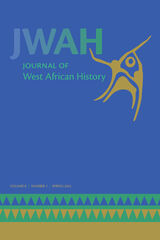 Journal of West African History 8, no. 1
Nwando Achebe
Michigan State University Press Journals, 2022 In This Issue
Editor’s Introduction
Perceptible Pasts and Histories of Perceptions
Trevor R. Getz
“As Bitter as Senegalese Mahogany”: Mande Perceptions of Violence on the Road to Glory
David C. Conrad
Contemporary Africans Meet Timeless Africa: The Conflicted Impact of Asadata Dafora’s “African Operas” on Pan-African Work in the United States, 1930–50
Philip Serge Zachernuk
African Traditional Healing and Biomedicine: A Reconstruction of Colonial and Postindependence Health-Care History under Kwame Nkrumah, 1951–66
Samuel Adu-Gyamfi and Eugenia Anderson
Wealth in Knowledge: Spiritual Service and Political Power in Precolonial Asante
Emmanuel Akyeampong and David Owusu-Ansah
“The River Is Not to Be Crossed”: Anglo-French Boundary and Konkomba Cross-Border Mobility on the Ghana-Togo Border, 1918–30s
Joseph Udimal Kachim
Book Reviews
Power, Culture and Modernity in Nigeria: Beyond the Colony, by Oluwatoyin Oduntan
Reviewed by Katharina A. Oke
Beyond Aesthetics: Use, Abuse, and Dissonance in African Art Traditions, by Wole Soyinka
Reviewed by Haythem Guesmi
Colonial Transactions: Imaginaries, Bodies, and Histories in Gabon, Florence Bernault
Reviewed by Jeremy Dell
Essai d’histoire locale. L’oeuvre d’un historien guinéen à l’époque coloniale/The Work of a Guinean Historian during the Colonial Period, by Djiguiba Camara
Reviewed by Douglas W. Leonard
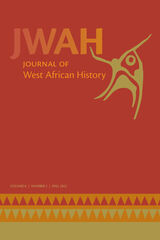 Journal of West African History 8, no. 2
Nwando Achebe
Michigan State University Press Journals, 2022 In This Issue
Editor’s Introduction
A West African Spider-Man and the Enduring Concept of “the Stranger”
Mark W. Deets
Articles
Colonial Labor Policy and North–South Migration in Ghana
Mariama Marciana Kuusaana
Beyond Resistance: Therapeutic Itinerary in Saint-Louis-du-Senegal between Indigenous and Scientific Medicine, 1820–1920
Kalala Ngalamulume
Modernizing Royals and Capitalists of Kumase: The Ashanti Turf Club, 1950–1980s
George M. Bob-Milliar and Ali Yakubu Nyaaba
The Challenge of Constructing Citizenship in a Multiracial Society in Postcolonial Sierra Leone: Rethinking the Case of John Joseph Akar
Peter Alpha Dumbuya
Devising and Disclosing an Autobiographical Self: Nana Konadu Agyeman-Rawlings in Asante and Ghana
Tom McCaskie
Book Reviews
Kimoukro. Sanctuaire de l’houphouëtisme, by Emmanuel Y. N’Goran
Reviewed by Aliou Ly
Colonial Suspects: Suspicion, Imperial Rule, and Colonial Society in Interwar French West Africa, by Kathleen Keller
Reviewed by John Cropper
Militarizing Marriage: West African Soldiers’ Conjugal Traditions in Modern French Empire, by Sarah J. Zimmerman
Reviewed by Bright Alozie
Countless Blessings: A History of Childbirth and Reproduction in the Sahel, by Barbara M. Cooper
Reviewed by Elke E. Stockreiter
Converging on Cannibals: Terrors of Slaving in Atlantic Africa, 1509–1670, by Jared Staller
Reviewed by Christopher M. Blakley
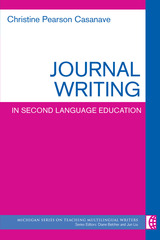 Journal Writing in Second Language Education
Christine Pearson Casanave
University of Michigan Press, 2011 Journal writing is not new--journals have been around for centuries. More recently, journals have been viewed as a means of scaffolding reflective teaching and encouraging reflectivity in research processes. As a result, some educators may ask, “What more do we need to know?” Those likely to raise this question are probably not thinking of the explosive growth of reflective writing enabled by social networking on the Web, the blogs and other interactive e-vehicles for reflection on experiences in our literate, “real,” and virtual lives This revisiting of journal writing from a 21st century perspective, informed by relevant earlier literature, is what Christine Pearson Casanave guides readers through in this first book-length treatment of the use of journal writing in the contexts of language learning, pre and in-service teaching, and research. Casanave has put together existing ideas that haven't been put together before and has done it not as an edited collection, but as a single-authored book. She has done it in a way that will be especially accessible to teachers in language teacher education programs and to practicing teachers and researchers of writing in both second and foreign language settings, and in a way that will inspire all of us to think about, not just do, journal writing. Those who have never attempted to use journals in their classes and own lives, as well as others who have used it with mixed results, will probably be tempted to try it in at least some of the venues Casanave provides guidance for. Those already committed to journal writing will very likely find in this book new reasons for expanding and enhancing their use of journals.
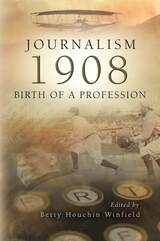 Journalism 1908: Birth of a Profession
Edited by Betty Houchin Winfield
University of Missouri Press, 2008 The year 1908 was not remarkable by most accounts, but it was an auspicious year for journalism. As newspapers sought to recover from big-city yellow journalism and circulation wars that reached their boiling point a few years earlier during the Spanish-American War, press clubs began to champion higher education. And schools dedicated to journalism education, led by the University of Missouri, began to emerge. Now sanctioned by universities, journalism could teach acceptable behavior and establish credentials. It was nothing less than the birth of a profession.
Journalism—1908 opens a window on mass communication a century ago. It tells how the news media in the United States were fundamentally changed by the creation of academic departments and schools of journalism, by the founding of the National Press Club, and by exciting advances that included early newsreels, the introduction of halftones to print, and even changes in newspaper design.
Journalism educator Betty Houchin Winfield has gathered a team of well-known media scholars, all specialists in particular areas of journalism history, to examine the status of their profession in 1908: news organizations, business practices, media law, advertising, forms of coverage from sports to arts, and more. Various facets of journalism are explored and situated within the country’s history and the movement toward reform and professionalism—not only formalized standards and ethics but also labor issues concerning pay, hours, and job differentiation that came with the emergence of new technologies.
This overview of a watershed year is national in scope, examining early journalism education programs not only at Missouri but also at such schools as Colgate, Washington and Lee, Wisconsin, and Columbia. It also reviews the status of women in the profession and looks beyond big-city papers to Progressive Era magazines, the immigrant press, and African American publications.
Journalism—1908 commemorates a century of progress in the media and, given the place of Missouri’s School of Journalism in that history, is an appropriate celebration of that school’s centennial. It is a lode of information about journalism education history that will surprise even many of those in the field and marks a seminal year with lasting significance for the profession.
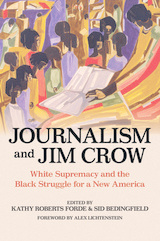 Journalism and Jim Crow: White Supremacy and the Black Struggle for a New America
Edited by Kathy Roberts Forde and Sid Bedingfield
University of Illinois Press, 2021 Winner of the American Historical Association’s 2022 Eugenia M. Palmegiano Prize. White publishers and editors used their newspapers to build, nurture, and protect white supremacy across the South in the decades after the Civil War. At the same time, a vibrant Black press fought to disrupt these efforts and force the United States to live up to its democratic ideals. Journalism and Jim Crow centers the press as a crucial political actor shaping the rise of the Jim Crow South. The contributors explore the leading role of the white press in constructing an anti-democratic society by promoting and supporting not only lynching and convict labor but also coordinated campaigns of violence and fraud that disenfranchised Black voters. They also examine the Black press’s parallel fight for a multiracial democracy of equality, justice, and opportunity for all—a losing battle with tragic consequences for the American experiment. Original and revelatory, Journalism and Jim Crow opens up new ways of thinking about the complicated relationship between journalism and power in American democracy. Contributors: Sid Bedingfield, Bryan Bowman, W. Fitzhugh Brundage, Kathy Roberts Forde, Robert Greene II, Kristin L. Gustafson, D'Weston Haywood, Blair LM Kelley, and Razvan Sibii
Journalism and Realism: Rendering American Life
Thomas B Connery
Northwestern University Press, 2011 Both newspaper and magazine journalism in the nineteenth century fully participated in the development and emergence of American Realism in the arts, which attempted to accurately portray everyday life, especially in fiction. Magazines and newspapers provided the raw material for American Realism, but were also its early and vocal advocates. This symbiotic relationship reached its peak from 1890 to 1910, when writers who might be called the first literary journalists (or, much later, “new journalists”) closed the circle by more fully adopting the fiction writer’s style of attempting to “show the reader real life,” as their literary progeny Tom Wolfe would put it many years later. Journalism and Realism fills a much-needed gap in the scholarship of American Realism.
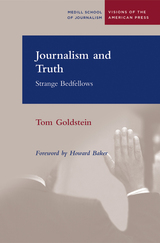 Journalism and Truth: Strange Bedfellows
Tom Goldstein
Northwestern University Press, 2007 The complaint is all too common: I know something about that, and the news got it wrong. Why this should be, and what it says about the relationship between journalism and truth, is exactly the question that is at the core of Tom Goldstein’s very timely book.
Other disciplines, Goldstein tells us, have clear protocols for gathering evidence and searching for truth. Journalism, however, has some curious conventions that may actually work against such a goal. Looking at how journalism has changed over time--and with it, notions about accuracy and truth in reporting—Goldstein explores how these long-standing and ultimately untrustworthy conventions developed. He also examines why reliable standards of objectivity and accuracy are critical not just to a free press but to the democratic society it informs and serves. From a historical overview to a reconsideration of a misunderstood book about journalism (The Journalist and the Murderer) to a reflection on the coverage of the war in Iraq, his book offers a remarkably wide-ranging and thought-provoking account of how journalism and truth work—or fail to work—together, and why it matters.
Journalism Ethics: 21 Essentials from Wars to Artificial Intelligence
Eric Wishart
Hong Kong University Press, 2024 A necessary guide to responsible journalism in a challenging media landscape.
This concise and authoritative work offers the latest guidance on journalism ethics for students and media professionals and will help empower news consumers to make informed decisions about the trustworthiness of their sources of information. It offers advice on all aspects of journalism ethics including accuracy and seeking the truth, representation of women, LGBTQ coverage, climate change, mental health, use of images, conflict reporting, elections, and how to use artificial intelligence. The author brings a unique perspective and depth of knowledge to the complex challenges facing journalists and news consumers in this era of fake news, disinformation, and artificial intelligence.
Journalism in the Movies
Matthew C. Ehrlich
University of Illinois Press, 2006 From cynical portrayals like The Front Page to the nuanced complexity of All the President’s Men, and The Insider, movies about journalists and journalism have been a go-to film genre since the medium's early days. Often depicted as disrespectful, hard-drinking, scandal-mongering misfits, journalists also receive Hollywood's frequent respect as an essential part of American life. Matthew C. Ehrlich tells the story of how Hollywood has treated American journalism. Ehrlich argues that films have relentlessly played off the image of the journalist as someone who sees through lies and hypocrisy, sticks up for the little guy, and serves democracy. He also delves into the genre's always-evolving myths and dualisms to analyze the tensions—hero and oppressor, objectivity and subjectivity, truth and falsehood—that allow journalism films to examine conflicts in society at large.
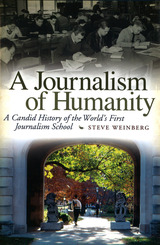 A Journalism of Humanity: A Candid History of the World's First Journalism School
Steve Weinberg
University of Missouri Press, 2008 It might seem unlikely that a midwestern university located far from national media centers would be home to the world’s first journalism school, but the University of Missouri holds that distinction. Now celebrating its centennial, the School of Journalism, founded by a newsman who lacked a college education, is regarded as one of the highest-rated in the world. Steve Weinberg, an alumnus and investigative reporter who returned to teach at Missouri, now covers—and uncovers—the many-faceted history of its School of Journalism, from the days of Walter Williams through the Dean Mills era. A Journalism of Humanity balances the dynamics of the university that set the school’s course with the external forces that shaped journalism and society. True to journalism, it reveals the school’s flaws as well as its virtues. Bringing his investigative expertise to bear, Weinberg tells the school’s complex story through thematic chapters. He draws on internal documents and correspondence to uncover the politics of the school from its founding to the present—the struggles over resources as well as the constant battle to balance scholarly ambitions with professional mission. In the course of his chronicle, he depicts an institution ahead of its time in professional education but often lagging in dealing with social issues such as race and gender. Weinberg’s account embraces faculty and staff members, students and alumni, supporters and detractors, as it covers all professional sequences taught at the school. It captures the freewheeling debate that has been a hallmark of the school and includes the perspectives of women, blacks, and gays, who all too often were marginalized. It also incorporates a wealth of insider detail, from a typical day at the school during the Williams era to tales of the “Missouri Mafia.” Key players, significant programs, legal and ethical battles—all are covered in a candid history that makes captivating reading for those associated with the school or for anyone interested in the development of journalism education. A Journalism of Humanity is a story as big as its subject that looks back on a trailblazing century and forward toward a continuing dedication to journalistic excellence.
Journalism Re-examined: Digital Challenges and Professional Orientations (Lessons from Northern Europe)
Edited by Martin Eide, Helle Sjøvaag, and Leif Ove Larsen
Intellect Books, 2016 The digital era has posed innumerable challenges to the business and practice of journalism. Journalism Re-examined sets out an institutional theoretical framework for exploring the journalistic institution in the digital age and analyzes how it has responded to those profound changes in its social and professional practices, norms, and values. Building their analysis around the concept of these changes as reorientations, the contributors present a number of case studies, with a particular emphasis on journalism in the Nordic countries. They explore not just straight news and investigative journalism, but also delve into lifestyle and documentary coverage, all with the aim of understanding the reorientations facing journalism and the ways they might present a sustainable future path.
 Journalism, Society and Politics in the Digital Media Era
Edited by Nael Jebril, Stephen Jukes, Sofia Iordanidou, and Emmanouil Takas
Intellect Books, 2020 Advances in digital communication have affected the relationship between society, journalism, and politics within different contexts in varied ways and intensities. This volume, combining interdisciplinary academic and professional perspectives, assesses the impact of the digital media environment on citizens, journalists, and politicians in diverse sociopolitical landscapes. The first part evaluates the transformative power of media literacy in the digital age and the challenges that journalism pedagogy encounters in global and fragmented environments. The second part critically examines the methods in which social media is used by politicians and activists to communicate during political campaigns and social protests. The third part analyzes the impact of digitalization on professional journalism and news consumption strategies. The fourth part offers a range of case studies that illustrate the significant challenges facing online media regarding the framing and representation of communities in crisis and shifting contexts. The book is intended to introduce readers to the crucial dynamic and diverse challenges that affect our societies and communitive practices as a result of the interplay between digital media and political and societal structures.
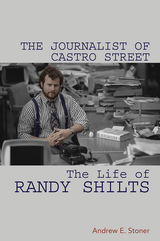 The Journalist of Castro Street: The Life of Randy Shilts
Andrew E. Stoner
University of Illinois Press, 2019 As the acclaimed author of And the Band Played On, Randy Shilts became the country's most recognized voice on the HIV/AIDS epidemic. His success emerged from a relentless work ethic and strong belief in the power of journalism to help mainstream society understand not just the rising tide of HIV/AIDS but gay culture and liberation. In-depth and dramatic, Andrew E. Stoner's biography follows the remarkable life of the brash, pioneering journalist. Shilts's reporting on AIDS in San Francisco broke barriers even as other gay writers and activists ridiculed his overtures to the mainstream and labeled him a traitor to the movement, charges the combative Shilts forcefully answered. Behind the scenes, Shilts overcame career-threatening struggles with alcohol and substance abuse to achieve the notoriety he had always sought, while the HIV infection he had purposely kept hidden began to take his life. Filled with new insights and fascinating detail, The Journalist of Castro Street reveals the historic work and passionate humanity of the legendary investigative reporter and author.
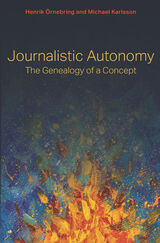 Journalistic Autonomy: The Genealogy of a Concept
Henrik Örnebring
University of Missouri Press, 2022 Winner of the 2023 AEJMC Tankard Book Award and the ICA Journalism Studies Book Award
The idea that journalism should be independent is foundational to its contemporary understandings and its role in democracy. But from what, exactly, should journalism be independent? This book traces the genealogy of the idea of journalistic autonomy, from the press freedom debates of the 17th century up to the digital, networked world of the 21st. Using an eclectic and thought-provoking theoretical framework that draws upon Friedrich Nietzsche, feminist philosophy, and theoretical biology, the authors analyze the deeper meanings and uses of the terms independence and autonomy in journalism.
This work tackles, in turn, questions of journalism’s independence from the state, politics, the market, sources, the workplace, the audience, technology, and algorithms. Using broad historical strokes as well as detailed historical case studies, the authors argue that autonomy can only be meaningful if it has a purpose. Unfortunately, for large parts of journalism’s history this purpose has been the maintenance of a societal status quo and the exclusion of large groups of the population from the democratic polity. “Independence,” far from being a shining ideal to which all journalists must aspire, has instead often been used to mask the very dependencies that lie at the heart of journalism. The authors posit, however, that by learning the lessons of history and embracing a purpose fit for the needs of the 21st century world, journalism might reclaim its autonomy and redeem its exclusionary uses of independence.
 Journals and Miscellaneous Notebooks of Ralph Waldo Emerson
Ralph Waldo Emerson
Harvard University Press Volume VI in this series contains quotation books and miscellaneous notebooks that Ralph Waldo Emerson kept between 1824 and 1838, and to which he added occasionally as late as the 1860s. With some attempt at a systematic listing, but more often at random, he set down an enormous variety of entries from Burke, Montaigne, Madame de Staël, Bacon, Plutarch, Jeremy Taylor, and a host of other writers both famous and obscure, with frequent comments of his own.
One book contains Emerson’s lengthy translations of Goethe, while another is devoted to his brother Charles, who died in 1836, and includes, among other items, excerpts from Charles’s letters to his fiancée. A third contains an interview with a survivor of the battle of Concord and household accounts from the fall and winter of 1835, just after Emerson’s marriage to Lydia Jackson.
Frequent annotations show that Emerson referred to several of these books in composing the sermons he began to give late in 1826, and that many of the entries found their way into his public lectures, into Nature, and into Essays: First Series. These pages are a fascinating indication of the sources on which Emerson drew steadily in his writing and thinking, and reflect clearly, although indirectly, his own characteristic philosophy.
 Journals and Miscellaneous Notebooks of Ralph Waldo Emerson
Ralph Waldo Emerson
Harvard University Press The journals printed in this volume, covering the years 1852 to 1855, find Emerson increasingly drawn to the issues and realities of the pragmatic, hard-working nineteenth century. His own situation as a middle-aged, property-owning New Englander with a large household to support gave him a strong sense of everyday financial necessity, and his wide reading for his projected book on the English impressed him deeply with the worldly success that had come to that unphilosophical people. The growing crisis over slavery at home, moreover, demanded the attention of every citizen, even one as reluctant to engage in social issues as Emerson.
Emerson's extensive reading about the English, which ranged from Camden's Britannia through the diaries of Samuel Pepys and Thomas Moore to the latest issues of the London Times, convinced him that, despite its materialism, England was "the best of actual nations." The robust physical health of the English, their common sense, and their instinct for fair play insured that the future belonged to them and their transatlantic cousins, the Americans.
Yet the facts of American political life often led Emerson to wonder whether his country had any future at all. So long as his fellow citizens were willing to countenance the evil of slavery, they could not play their proper role in the world, the pages of his journals indicate, Emerson, like an increasing number of other Americans, was coming to believe that the issue had to he resolved, whatever the cost.
 Journals and Miscellaneous Notebooks of Ralph Waldo Emerson
Ralph Waldo Emerson
Harvard University Press The journals of 1835–1838, perhaps the richest Ralph Waldo Emerson had yet written, cover the pivotal years when he brought to Concord his second wife, Lydia Jackson of Plymouth, published Nature (1836), and wrote “The American Scholar” (1837) and the Divinity School Address (1838). As he turned from the pulpit to the lecture platform in the 1830’s, the journals became more and more repository for the substance of future lectures; his annual winter series, particularly those dealing with The Philosophy of History, in 1836–1837, and Human Culture, in 1837–1838, were drawn largely from materials contained in this volume.
Along with lecture material, the journals of these years include Emerson’s notes on his extensive reading, expressions of his griefs and joys, and his perennial reflections on man and his relation to nature and the divine. The birth of his son Waldo in October of 1836 compensated perhaps for the death of his beloved brother Charles the previous May. New friendships with Margaret Fuller, Henry Thoreau, and especially Bronson Alcott (whom Emerson called “the highest genius of the time”) replaced to a degree the close intellectual companionship he had enjoyed with Charles.
Printed here for the first time are the complete texts of these journals. They reveal the continuity of Emerson’s development and add to the understanding both of his thought and of his methods of literary composition.
 Journals and Miscellaneous Notebooks of Ralph Waldo Emerson
Ralph Waldo Emerson
Harvard University Press Ralph Waldo Emerson’s life from 1826 to 1832 has a classic dramatic structure, beginning with his approbation to preach in October 1826, continuing with his courtship, his brief marriage to Ellen Tucker, and his misery after her death, and concluding with his departure from the ministry.
The journals and notebooks of these years are far fewer than those in the preceding six years. Emerson noted down many ideas for sermons in his journals, but as time went on he wrote the sermons independently. Occasionally he wrote openly about family matters, but except for the passionate response to Ellen and her death the journals tell little about the impact upon him of other people and outside events. The pattern is consistent with the earlier journals: Emerson used them mainly to record his thought, to develop and express his ideas. His religious and intellectual interests were undergoing significant changes in orientation or emphasis. He was less concerned with the existence of God than with the nature and influence of Christ. He continued to reassert the truth of Christianity, but in his growing unorthodoxy he came to show less and less sympathy with the church, with forms and ritual, with convention. And he began to wonder whether it is not the worst part of the man that is the minister.
During these years, Emerson read more in Madame de Staël, Wordsworth, Gérando, and Coleridge, less in Milton, the Augustans, Dugald Stewart, and Scott. In style, he moved from a rambling, bookish rhetoric to the tautness and the cadences that mark his later Essays.
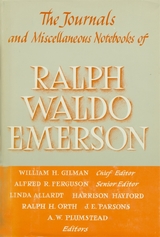 Journals and Miscellaneous Notebooks of Ralph Waldo Emerson
Ralph Waldo Emerson
Harvard University Press In faithfully reproducing all of Ralph Waldo Emerson’s handwritten journals and notebooks, this edition is succeeding in revealing Emerson the man and the thinker. The old image of the ideal nineteenth-century gentleman, created by editorial omission of his spontaneous thoughts, is replaced by the picture of Emerson as he really was. His frank and often bitter criticisms of men and society, his “nihilizing,” his views of woman, his ideas of the Negro, of religion, of God—these and other expressions of his private thought and feeling, formerly deleted or subdued, are here restored. Restored also is the full evidence needed for studies of his habits of composition, the development of his style, and the sources of his ideas. Canceled passages are reproduced, misreadings are corrected, and hitherto unpublished manuscripts are now printed.
Here is the twelfth volume, which makes available nine of Emerson’s lecture notebooks, covering a span of twenty-seven years, from 1835 to 1862, from apprenticeship to fame. These notebooks contain materials Emerson collected for the composition of his lectures, articles, and essays during those years, a complex mixture of index-like surveys of his journals, lists of possible topics and titles, salvaged journal passages and revisions, new drafts ranging from brief paragraphs to several pages in length, notes and translations from his reading, working notes, and partial outlines. In them we see Emerson at work, balancing his aspirations as orator and writer against the practicalities of deadlines, finances, and audiences.
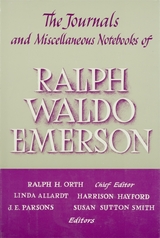 Journals and Miscellaneous Notebooks of Ralph Waldo Emerson
Ralph Waldo Emerson
Harvard University Press The journals from 1854 to 1861 show the ripeness of Ralph Waldo Emerson’s thought overshadowed by the gravest problem of his time—slavery. In addition to completing English Traits (1856) and Conduct of Life (1860), Emerson wrote many of the lectures and articles that made up his next book, Society and Solitude. He also contributed often to The Atlantic Monthly after helping to found that magazine in 1857. Throughout these years he extended his strenuous trips as a lyceum lecturer, crossing and recrossing the frozen Mississippi several times each winter. In Concord, he continued his omnivorous reading, his beloved walks, and his friendships with Alcott, Channing, and Thoreau, but at home or away he saw America’s future darkening daily. In 1856, Emerson wrote to his brother William, “But what times are these, & how they make our studies impertinent, & even ourselves the same! I am looking into the map to see where I shall go with my children when Boston & Massachusetts surrender to the slave-trade.”
Influenced by events such as the murder of New England men in bloody Kansas and the assault on Charles Sumner in the U.S. Congress in 1856, by a growing friendship with Theodore Parker, and by John Brown’s visits to Concord in 1857 and 1859, Emerson became one of the most notable speakers against slavery. He armed himself for his emergence from the study by marshalling his thoughts on liberty as he would have ranged his thoughts on any other topic. Notebook WO Liberty, rediscovered in the Library of Congress in 1964, collects his ideas on slavery and human liberty. Probably begun in 1854 it contains drafts or records of seven antislavery speeches, including his major antislavery address, “American Slavery,” first given in January, 1855. These notebooks and journals bring the philosopher of "the infinitude of the private man" to January 1861 and the brink of war.
 Journals and Miscellaneous Notebooks of Ralph Waldo Emerson
Ralph Waldo Emerson
Harvard University Press When Ralph Waldo Emerson began these journals in June of 1838, he “had achieved initial success in each of his main forms of public utterance. The days of finding his proper role and public voice were now behind him…and his…personal life had healed from earlier wounds.” Now he was married to Lydia Jackson of Plymouth and was the father of a young son, Waldo. They lived in a large, comfortable house in Concord, only a half-day’s drive from Boston but close to the solitude of nature. Still to come was the controversy he would create by his address to the graduating class at Harvard Divinity School, an address in which he would say that the Divinity School trained ministers for a dead church. These journals record his responses to the severe criticism and trace his struggles as he overcame the stings of attack with a growing confidence in himself as a thinker, lecturer, and writer.
In addition to introspective writings, the journals contain Emerson’s observations on his reading, on his country, especially during the presidential campaign of 1840, on slavery, on art and nature, on religion and the need for a new understanding of its meaning, and on love. His relations with such close friends as Bronson Alcott and Margaret Fuller also are reflected here, as are his developing friendships with Thoreau, Jones Very, Samuel Ward, Caroline Sturgis, and William Ellery Channing, the poet.
During this period he gave three series of lectures and published his second book, Essays, which contains some of his greatest work: “Self Reliance,” “Compensation,” and “The Over-Soul.” The major workshop for Essays, these journals are indispensable for the study of Emerson’s creative processes. Many entries are published here for the first time, including experimental lists of topics for Essays and possibly the earliest draft of the poem “The Sphinx.”
For Emerson, the journal was one of the most important of literary genres. His own journals not only formed his “artificial memory,” but became “a living part of him.” He later wrote, “The man is only half himself, the other half is his expression.”
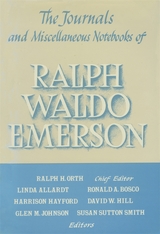 Journals and Miscellaneous Notebooks of Ralph Waldo Emerson
Ralph Waldo Emerson
Harvard University Press The Civil War is a pervasive presence in the journals in this volume. “The war searches character,” Ralph Waldo Emerson wrote. Both his reading and his writing reflected his concern for the endurance of the nation, whose strength lay in the moral strength of the people. He read military biographies and memoirs, while turning again to Persian, Chinese, and Indian literature. The deaths of Clough, Thoreau, Hawthorne, and his aunt Mary Moody Emerson prompted him to reread their letters and journals, remembering and reappraising.
These were stirring, poignant years for Emerson. The times were hard, his lecturing was curtailed, and a new book seemed out of the question. He felt the losses, fears, and frustrations that come to those who believe in a cause they are too old to fight for. But his respected position as a man of letters brought him some unusual experiences, such as a trip to Washington in which he met President Lincoln, Secretaries Seward and Chase, and other key figures in the government. Inspecting West Point as a member of the Board of Visitors, he was deeply impressed by the character and spartan training of the cadets who were soon to see action.
At the war’s end, busy again with a heavy lecture schedule and feeling his age a little, he took a long look back at the conflict and concluded that war “heals a deeper wound than any it makes.”
 Journals and Miscellaneous Notebooks of Ralph Waldo Emerson
Ralph Waldo Emerson
Harvard University Press Ralph Waldo Emerson, the man and thinker, will be fully revealed for the first time in this new edition of his journals and notebooks. The old image of the ideal nineteenth-century gentleman, created by editorial omissions of his spontaneous thoughts, is replaced by the picture of Emerson as he really was. His frank and often bitter criticisms of men and society, his “nihilizing,” his anguish at the death of his first wife, his bleak struggles with depression and loneliness, his sardonic views of woman, his earthy humor, his ideas of the Negro, of religion, of God—these and other expressions of his private thought and feeling, formerly deleted or subdued, are here restored. Restored also is the full evidence needed for studies of his habits of composition, the development of his style, and the sources of his ideas.
The second volume prints the exact texts of nine journals and three notebooks. It reveals the shape of some of Emerson’s enduring interests, in embryo “essays” on the moral sense, moral beauty, taste, greatness and fame, friendship, compensation, and the unity of God and the universe. Restored from oblivion are suppressed passages on the Negro and revelations of acute melancholy and rebelliousness. These records of his developing thought are also the history of his early obscurity, when the fame he sought was still painfully remote.
 Journals and Miscellaneous Notebooks of Ralph Waldo Emerson
Ralph Waldo Emerson
Harvard University Press Ralph Waldo Emerson’s decision to quit the ministry, arrived at painfully during the summer and fall of 1832, was accompanied by illness so severe that he was forced to give up any immediate thought of a new career. Instead, in December, he embarked on a tour of Europe that was to take him to Italy, France, Scotland, and England. Within a year after his return in the fall in 1833, his health largely restored, he went to live in the town of Concord, his home from then on.
The record of Emerson’s ten months in Europe which makes up a large part of this book is unusually detailed and personal, actually a diary recording what Emerson saw and did as well as what he thought. He describes cities, scenes, and buildings that he found striking in one way or another and he gives impressions of the people he met. During his travels he made the acquaintance of Landor, of Lafayette, and of Carlyle, Wordsworth, and Coleridge, all of whom stimulated him. In Paris he was so much stirred by a visit to the Jardin des Plantes that he determined “to become a naturalist.”
On his return to America, still without a profession, he reverted in his journals to the more impersonal form they had taken in his days as a minister, focusing on his inner experiences rather than on external events. Notes start dotting the pages once again, this time not so much for future sermons—although for years he did a certain amount of occasional preaching as for the addresses of the public lecturer he would soon become.
Through the thirty-four months covered by this volume, the journals continue to he the advancing record of Emerson’s mind, demonstrating a growing maturity and firmness of style by compression and aphorism.
 Journals and Miscellaneous Notebooks of Ralph Waldo Emerson
Ralph Waldo Emerson
Harvard University Press, 1960 In July 1841, Ralph Waldo Emerson wrote to Thomas Carlyle: “My whole philosophy…teaches acquiescence and optimism.” The journals in this volume, beginning in the summer of 1841, record the spiritual history of two years that can be viewed as the most critical test in Emerson’s life of his ability to maintain the two aspects of that philosophy.
Early in 1842 his son Waldo died, and the man who only months before had described himself as “professor of the joyous Science” found himself once again confronting the full implications of grief. Seeking to comprehend the loss, he used his journals to articulate and rediscover the vital faith upon which his philosophy rested. In passages that went eventually into “Experience,” and in the earliest drafts of the poem “Threnody,” which appear for the first time in these pages, he discovered that even this harsh event had its “compensations.” Waldo’s death forced a reassessment of the convictions that gave life to his earlier writings. He transformed his numb responses into his most moving poetry and prose, giving new and significant meaning to his “old motto”: “I am Defeated all the time, yet to Victory I am born.”
Emerson’s motto is revealing, for its concepts display aptly the bipolarity that characterizes so much of his thought during these crucial years. He carried on at length an internal debate between the active and passive life styles. He saw his friends committed in their various ways to a more emphatic practice of their philosophies than he was able to undertake. Moving between engagement and withdrawal, commitment and aloofness, action and passivity, he consistently sought that point of equilibrium where the opposing forces of his thought could be held in creative tension.
As Emerson’s private experience deepened, he was becoming more completely the public man of letters: writing, publishing, editing The Dial, and lecturing. His travels brought him in contact with the leading men of his day, and with sights and exposures which even his beloved New England could not offer. Amidst the public duties, however, it was Concord which remained the still, vital center of his life. A brilliant and widely diversified range of visitors brought the world to Emerson’s home and inspired him to explore personal and literary issues which he would develop in his journals and later utilize in lectures and essays.
Emerson saw his calling as that of a poet; these journals are abundant in verse. Working versions of some of his most noted poems reveal the complex relationship between his private and literary life and the manner in which he attempted to fuse the diversities of his thought. In the eight regular journals and three miscellaneous notebooks of this volume is the record of these fusions. This period of his life closes, as it opened, with “acquiescence and optimism.” But the creative skepticism which is so characteristic of the second series of essays and the poems of 1841–1843 is the mark of a “very real philosophy,” tempered and tried by adversity, by success, and by “Experience.”
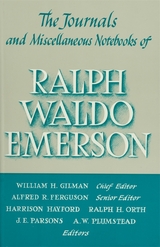 Journals and Miscellaneous Notebooks of Ralph Waldo Emerson
Ralph Waldo Emerson
Harvard University Press Emerson's journals of 1847-1848 deal primarily with his second visit to Europe, occasioned by a British lecture tour that began at Manchester and Liverpool in November of 1847, took him to Scotland in the following February, and concluded in London during June after he had spent a month as a sightseer in Paris. The journals of these years, along with associated notebooks and letters, recorded the materials for lectures that Emerson composed while abroad, for additional lectures on England and the English that he wrote shortly after his return to Concord, and ultimately, for English Traits, the book growing out of his travels that he was to publish in 1856.
Travel abroad provided a needed change for Emerson in 1847 as it had done on previous occasions, though with his usual discounting of the values of mere change of place he was slow in deciding to make the trip. Discouragement with the prevailing political climate at the time of the Mexican War and the old uncertainty about his own proper role in the "Lilliput" of American society were much on his mind as the year began. In March he thought of withdrawing temporarily "from all domestic & accustomed relations"--preferably to enjoy "an absolute leisure with books," though he also recognized the want of some "stated task" to stimulate his flagging vitality; in July he finally agreed to accept a long-standing invitation to visit England as a lecturer. As matters turned out, a full schedule of lectures and travel, unexpectedly heavy social engagements along the way, and proliferating correspondence left Emerson little time for reading but did not prevent him from filling his journals with sharp observations on the passing scene.
As Emerson moved about England his acknowledged admiration for the English rose every day, though he was careful to distinguish their less admirable qualities.
The Englishman's "stuff or substance seems to be the best of the world," he told Margaret Fuller. "I forgive him all his pride. My respect is the more generous that I have no sympathy with him, only an admiration." He took a wry amusement from the new experience of being lionized by his hosts. In his journals are lively portraits of those who entertained him, such as Richard Monckton Milnes, his particular sponsor in the society of London and Paris, and sketches of literary notables including Rogers, Dc Quincey, Wilson, Tennyson, and Dickens. He renewed acquaintance with Wordsworth and recorded in detail the pronouncements of his old friend Carlyle. Settling in London in March and April of 1848, he divided his time between work at his desk, visits to nearby points of interest, and the mixed pleasures of a busy social life. In May he went to France just as an abortive uprising against the new provisional government was brewing. Four weeks in Paris served to correct his old "prejudice" against the French, who on closer acquaintance rose in his estimation just as the English had done. In June he returned to London to lecture, and in July, after visiting Stonehenge with Carlyle, he sailed home. As the journals reveal, he reached Concord refreshed and renewed by the change of scene, the new acquaintance, and the generous reception that the trip had brought him, and with an enlarged perspective that revealed to him once again the "proper glory" of his own country.
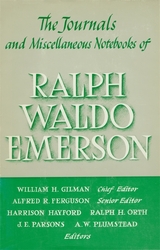 Journals and Miscellaneous Notebooks of Ralph Waldo Emerson
Ralph Waldo Emerson
Harvard University Press The pages of these five journals covering the years 1843 to 1847 are filled with Ralph Waldo Emerson’s struggle to formulate the true attitude of the scholar to the vexing question of public involvement. Pulled between his belief that a disinterested independence was a requisite for the writer and the public demands heaped upon him as a leading intellectual figure, he notes to himself that he “pounds…tediously” on the “exemption of the writer from all secular works.”
Although Emerson concluded his editorship of The Dial in 1844, he was continually beset by calls for public service, most of which drew their impetus from the reformist syndrome of the 1840s. In response to such issues as the Temperance Movement, the utopian communities, and Henry Thoreau’s experiment in self-reliance at Walden Pond, Emerson exercised sympathetic skepticism and held a growing conviction that the society of the day was not the lost cause many of his contemporaries believed it to be.
These journals record Emerson’s optimistic attitudes and show how later they existed side-by-side with concerns that, under the impulse of abolition, Texas, and the Mexican War, led him to some bitter conclusions about the state of the nation. Thoreau’s refusal to pay his poll tax in demonstration against slavery and the war particularly horrified him, and he confides in his journal that Thoreau’s action diverted attention from the possibility of real reform.
The moral ambivalence and cynicism of the day strengthened Emerson’s belief that the self-reliant individual was the only answer. These individuals—men like Garrison, Phillips, and Carlyle—were, in Emerson’s estimation, destined to set the standards by which society would be judged. Encouraged by the prospective publication of his first volume of poetry in 1846, Emerson also spent much of this period composing verse. Among the poems in these journals are “Uriel,” “Merlin,” “Ode to Beauty,” and a section from “Initial, Daemonic, and Celestial Love.”
In anticipation of his second visit to Europe, Emerson began preparing a lecture series on “Mind and Manners of the Nineteenth Century.” In these lectures he would take to the Old World his observations on the complexities of the times.
 Journals and Miscellaneous Notebooks of Ralph Waldo Emerson
Ralph Waldo Emerson
Harvard University Press Like Goethe, Ralph Waldo Emerson wanted to be the cultural historian and interpreter of his age—its business, politics, discoveries. The journals and notebooks included in this volume and covering in depth the years 1848 to 1851 reflect Emerson’s preoccupations with the events of these often turbulent years in America.
On his return to Concord from his successful lecture trip to England and visit to Paris in 1847–1848, Emerson resumed his familiar life of writer, thinker, and lecturer. Impressions of his recent European travels appear in passages in this volume which are used later in English Traits (1856). He writes of technological and scientific discoveries in America and abroad—one of which, the discovery of ether, was to involve his brother-in-law in legal embroilment. He ponders the meaning, for “the age” or “the times,” of reports on the Dew textile mills in Lawrence, Massachusetts, of faster steamers daily breaking records, of new geological and paleontological findings, of theories of race, and many other matters that were coming increasingly to the fore in the mid-nineteenth century. Many passages on these topics, used first in lectures, later appear in his essays “Fate,” “Wealth,” and “Power” in Conduct of Life (1860). He was also adding to his critical biographies for Representative Men (1850), with special attention to Swedenborg, always a source of particular interest for Emerson.
Between 1850 and 1853, Emerson traveled farther west to lecture than he had hitherto ventured—to Pittsburgh, Cincinnati, St. Louis, and many other cities in the midwest. One notebook in the present volume records his customary percipient observations of places and people encountered during these western trips.
The tragic drowning of Margaret Fuller Ossoli and her family on her return from Italy in 1850 prompted Emerson to consider a collaboration on her life and writings, and another notebook printed here contains her memorabilia, including original entries by Emerson. Memoirs of Margaret Fuller Ossoli by Emerson, William Henry Charming, and James Freeman Clarke, was published in 1852.
Passage of the Fugitive Slave Law in 1850 brought to a boil something in Emerson that had long been simmering. Concerned with slavery, freedom, and the future of the black population in America more than his public record had shown, he now delivered himself of an outburst—pained, vitriolic, ironic—a more sustained response to a single issue than appears elsewhere in all his journals. In this latest move in a compounding national tragedy he could see only chicanery and deterioration, the crumbling of America’s moral fiber. He saw the Fugitive Slave Law in a larger context of a sick age; like Tennyson and Arnold in England, he lamented in moods of spite and chagrin the loss of faith and of an old world where political men of honor stood firm for the moral law. Most of his journal outburst went into his addresses “The Fugitive Slave Law,” 1851 and 1854.
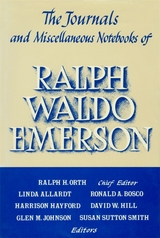 Journals and Miscellaneous Notebooks of Ralph Waldo Emerson
Ralph Waldo Emerson
Harvard University Press The final volume of the Harvard edition presents the journals of Ralph Waldo Emerson’s last years. In them, he reacts to the changing America of the post–Civil War years, commenting on Reconstruction, immigration, protectionism in trade, and the dangers of huge fortunes in few hands—as well as on baseball and the possibilities of air travel. His role as a Harvard Overseer evokes his thoughts on education during crucial years of reform in American universities.
His travels take him to Europe for the third time, and for the first time he encounters the new garden of California and the enigma of Egypt. He continues to lecture, and a second volume of poems and two more collections of essays, culled from his manuscripts, are published. Finally, his late journals show Emerson confronting his loss of creative vigor, husbanding his powers, and maintaining his equanimity in the face of decline.
This concluding volume thus gives a complex picture of Emerson in his last sixteen years, facing old age but still the advocate of “newness” throughout the world.
 Journals and Miscellaneous Notebooks of Ralph Waldo Emerson
Ralph Waldo Emerson
Harvard University Press Ralph Waldo Emerson, the man and thinker, will be fully revealed for the first time in this new edition of his journals and notebooks. The old image of the ideal nineteenth-century gentleman, created by editorial omissions of his spontaneous thoughts, is replaced by the picture of Emerson as he really was. His frank and often bitter criticisms of men and society, his “nihilizing,” his anguish at the death of his first wife, his bleak struggles with depression and loneliness, his sardonic views of woman, his earthy humor, his ideas of the Negro, of religion, of God—these and other expressions of his private thought and feeling, formerly deleted or subdued, are here restored. Restored also is the full evidence needed for studies of his habits of composition, the development of his style, and the sources of his ideas. Cancelled passages are reproduced, misreadings are corrected, and hitherto unpublished manuscripts are now printed. The text comes as close to a literal transcription as is feasible. A full apparatus of annotation, identification of quotations, and textual notes is supplied. Reproduced in this volume are twelve facsimile manuscript pages, many with Emerson’s marginal drawings.
The first volume includes some of the “Wide Worlds,” journals begun while Emerson was at Harvard, and four contemporary notebooks, mostly unpublished. In these storehouses of quotation, juvenile verse, themes, and stories are the first versions of Emerson’s “Valedictory Poem,” Bowdoin Prize Essays, and first published work. Together they give a faithful picture of Emerson’s apprenticeship as an artist and reveal the extent of his hidden and frustrated ambition—to become a writer.
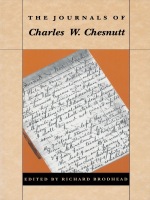 The Journals of Charles W. Chesnutt
Charles W. Chesnutt
Duke University Press, 1993 Born on the eve of the Civil War, Charles W. Chesnutt grew up in Fayetteville, North Carolina, a county seat of four or five thousand people, a once-bustling commercial center slipping into postwar decline. Poor, black, and determined to outstrip his modest beginnings and forlorn surroundings, Chesnutt kept a detailed record of his thoughts, observations, and activities from his sixteenth through his twenty-fourth year (1874-1882). These journals, printed here for the first time, are remarkable for their intimate account of a gifted young black man's dawning sense of himself as a writer in the nineteenth century.
Though he achieved literary success in his time, Chesnutt has only recently been rediscovered and his contribution to American literature given its due. The only known private diary from a nineteenth-century African American author, these pages offer a fascinating glimpse into Chesnutt's everyday experience as he struggled to win the goods of education in the world of the post-Civil War South. An extraordinary portrait of the self-made man beset by the urgencies and difficulties of self-improvement in a racially discriminatory society, Chesnutt's journals unfold a richly detailed local history of postwar North Carolina. They also show with great force how the world of the postwar South obstructed--and, unexpectedly, assisted--a black man of driving intellectual ambitions.
 The Journals of Claire Clairmont
Claire Clairmont
Harvard University Press The diaries of Clara Mary Jane Clairmont are, so far as is known, the last of the major documents of the Shelley-Byron circle to be published. Only the writings of the Shelleys themselves surpass hers in importance for those interested in the careers of the poets and their friends. Best known as Byron's mistress and the mother of his daughter Allegra, "Claire," as she preferred to be called, is important to literary history for her role in bringing Byron and Shelley together.
Claire Clairmont began her journals in 1814, when she accompanied Shelley and her half-sister, Mary Wollstonecraft Godwin, on their elopement to the continent. She continued to write them until after Byron and Shelley were dead and she was living as a governess with a wealthy family in Moscow. The journals present a detailed and fascinating picture of life with the Shelley family their discovery of the European landscape, wretched days in London dodging bailiffs and bill collectors, happy days of opera and ballet and endless conversations. Our knowledge of the Shelleys' life in Italy is expanded by this intimate view of the brilliant society of artists, writers, musicians, actors, scholars, revolutionaries, and nobility who were their constant companions. The later entries provide an account of the daily life of an Englishwoman living in Russia during the exciting time of the Decembrist uprising.
In The Journals of Claire Clairemont, Stocking has brought together five of Claire's journals, all that is known of the now-lost Russian journal, and two leaflets of Miscellanea dealing with the years 1828 to 1830. The interruptions in the diaries are bridged by narratives that allow the reader to follow her life, as she develops from an effervescent schoolgirl into a self-possessed, attractive, and talented young woman.
Appendices present reviews of theatrical performances seen by Claire and the Shelleys, biographical sketches of the varied personages they knew in Italy, a review by Mary Shelley (1826) describing people and life on the Continent as Claire and the Shelleys saw it, and the text of a manuscript fragment, possibly by Claire, containing thinly disguised romantic portrayals of the Shelleys and Jane and Edward Ellerker Williams. There is also a list of Claire's voluminous and systematic reading. Editorial comment within the body of the text has been kept to a minimum, and all of Claire's rewritings and crossings out are clearly indicated. Genealogical tables and numerous footnotes help to place Claire's journals in their proper social and historical perspective.
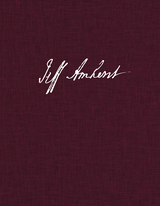 The Journals of Jeffery Amherst, 1757-1763, Volume 1: The Daily and Personal Journals
Robert J. Andrews
Michigan State University Press, 2014 General Jeffery Amherst served as commander in chief of the British army in North America during the Seven Years’ War from 1758 until 1763. Under Amherst’s leadership the British defeated French forces enabling the British Crown to claim Canada. Like many military officers, Amherst kept a journal of his daily activities, and the scope of this publication is from March 1757, while he was Commissary to the troops of Hesse-Kassel on British service in Germany, until his return to Great Britain in December 1763. The daily journal contains a record of and a commentary on events that Amherst witnessed or that he learned of through his correspondence. Where he mentions letters or orders received or sent, where possible, the present-day source locations of documents are identified. The Daily and Personal Journals are the record of the man who played a decisive role in British victories at Louisbourg, on Lake Champlain, and at Montreal. Amherst wrote the personal journal after he returned home. It does not have entries made on a daily basis. It is replete with lists, diagrams, and compendia to more fully explain events. Colored diagrams show dispositions or “Orders of Battle,” organizational structures, and evidence of uniform colors of units for campaigns at Louisbourg, Quebec, Niagara, Lake Champlain, the Carolinas, Montreal, and the Caribbean. In addition, Amherst made mileage charts and lists of ships, currency values, and officers who died during the war.
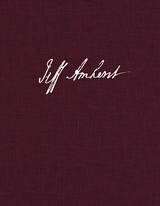 The Journals of Jeffery Amherst, 1757-1763, Volume 2: A Dictionary of People, Places, and Ships
Robert J. Andrews
Michigan State University Press, 2014 A Dictionary of People, Places, and Ships has more than 1,400 biographies of people mentioned by General Jeffery Amherst in his journals or identified by Robert J. Andrews in his notes. Included are entries for military and naval personnel, aboriginal leaders and warriors, and civilians. Where possible, a commission history is included for each officer of the French Forces, the Royal Navy, provincial officers, and regulars of the British Army. There is an extensive section about various types of commissions, ranks, units, regiments, and appointments. National origins of British army officers are discussed along with roles played by women of the army. Andrews identifies and analyzes units of “The American Army” that fought Great Britain’s war against the French during the Seven Years’ War in North America. Entries for sites that are named in Amherst’s journals contain descriptions or brief histories for each place. It also describes ships that are mentioned in the journals, including vessels that took part in the Louisbourg operation in 1758, Men of War employed at New York, and British and French vessels on the Great Lakes.
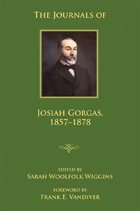 The Journals of Josiah Gorgas, 1857–1878
Josiah Gorgas, edited by Sarah Woolfolk Wiggins, foreword by Frank E. Vandiver
University of Alabama Press, 2009 Josiah Gorgas was best known as the highly regarded Chief of Confederate Ordnance. Born in 1818, he attended West Point, served in the U.S. Army, and later, after marrying Amelia Gayle, daughter of a former Alabama governor, joined the Confederacy. After the Civil War he served as president of The University of Alabama until ill health forced him to resign. His journals, maintained between 1857 and 1878, reflect the family's economic successes and failures, detail the course of the South through the Civil War, and describe the ordeal of Reconstruction. Few journals cover such a sweep of history. An added dimension is the view of Victorian family life as Gorgas explored his feelings about aspects of parental responsibility and transmission of values to children--a rarely documented account from the male perspective. His son, called Willie in the journals, was William Crawford Gorgas (1854-1920), who was noted for his fight to control yellow fever and who became surgeon general of the United States.
In his foreword to the volume, Frank E. Vandiver states: "Wiggins has done much more than present a well-edited version of Gorgas's diaries and journals; she has interpreted them in full Gorgas family context and in perspective of the times they cover. . . . Wiggins informs with the sort of editorial notes expected of a careful scholar, but she enlightens with wide knowledge of American and southern history. . . . Josiah Gorgas [was] an unusually observant, passionate man, a 'galvanized Rebel' who deserves rank among the true geniuses of American logistics."
Journals of Thomas H. Hobbs
Thomas Hubbard Hobbs
University of Alabama Press, 1976 A valuable account of life in the South
Written between 1840, when the diarist was fourteen years old, and 1862, when he died serving the Confederate States of America.
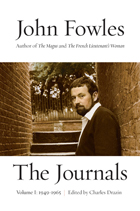 The Journals: Volume 1: 1949-1965
John Fowles
Northwestern University Press, 2008 John Fowles gained international recognition in 1963 with his first published novel, The Collector, but his labor on what may be his greatest literary undertaking, his journals, commenced over a decade earlier. Fowles, whose works include The Maggot, The French Lieutenant's Woman, and The Ebony Tower, is among the most inventive and influential English novelists of the twentieth century. The first volume begins in 1949 with Fowles' final year at Oxford. It reveals his intellectual maturation, chronicling his experiences as a university lecturer in France and as a schoolteacher on the Greek island of Spetsai. Simultaneously candid and eloquent, Fowles' journals also expose the deep connection between his personal and scholarly lives as Fowles struggled to win literary acclaim. From his affair with Elizabeth, the married woman who would become his first wife, to his passion for film, ornithology, travel, and book collecting, the journals present a portrait of a man eager to experience life. The second and final volume opens in 1966, as Fowles, already an international success, navigates his newfound fame and wealth. With absolute honesty, his journals map his inner turmoil over his growing celebrity and his hesitance to take on the role of a public figure. Fowles recounts his move from London to a secluded house on England's Dorset coast, where discontented with society's voracious materialism he led an increasingly isolated life. Great works in their own right, Fowles' journals elucidate the private thoughts that gave rise to some of the greatest writing of our time.
 The Journals: Volume 2: 1966-1990
John Fowles
Northwestern University Press, 2009 John Fowles gained international recognition in 1963 with his first published novel, The Collector, but his labor on what may be his greatest literary undertaking, his journals, commenced over a decade earlier. Fowles, whose works include The Maggot, The French Lieutenant's Woman, and The Ebony Tower, is among the most inventive and influential English novelists of the twentieth century. The first volume begins in 1949 with Fowles' final year at Oxford. It reveals his intellectual maturation, chronicling his experiences as a university lecturer in France and as a schoolteacher on the Greek island of Spetsai. Simultaneously candid and eloquent, Fowles' journals also expose the deep connection between his personal and scholarly lives as Fowles struggled to win literary acclaim. From his affair with Elizabeth, the married woman who would become his first wife, to his passion for film, ornithology, travel, and book collecting, the journals present a portrait of a man eager to experience life. The second and final volume opens in 1966, as Fowles, already an international success, navigates his newfound fame and wealth. With absolute honesty, his journals map his inner turmoil over his growing celebrity and his hesitance to take on the role of a public figure. Fowles recounts his move from London to a secluded house on England's Dorset coast, where discontented with society's voracious materialism he led an increasingly isolated life. Great works in their own right, Fowles' journals elucidate the private thoughts that gave rise to some of the greatest writing of our time.
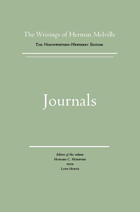 Journals: Volume Fifteen
Herman Melville
Northwestern University Press, 1989 This volume presents Melville's three known journals. Unlike his contemporaries Emerson, Thoreau, and Hawthorne, Melville kept no habitual record of his days and thoughts; each of his three journals records his actions and observations on trips far from home. In this edition's Historical Note, Howard C. Horsford places each of the journals in the context of Melville's career, discusses its general character, and points out the later literary uses he made of it, notably in Moby-Dick, Clarel, and his magazine pieces.
The editors supply full annotations of Melville's allusions and terse entries and an exhaustive index makes available the range of his acquaintance with people, places, and works of art. Also included are related documents, illustrations, maps, and many pages and passages reproduced from the journals. This scholarly edition aims to present a text as close to the author's intention as his difficult handwriting permits. It is an Approved Text of the Center for Editions of American Authors (Modern Language Association of America).
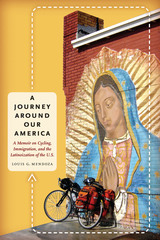 A Journey Around Our America: A Memoir on Cycling, Immigration, and the Latinoization of the U.S.
By Louis G. Mendoza
University of Texas Press, 2012 Immigration and the growing Latino population of the United States have become such contentious issues that it can be hard to have a civil conversation about how Latinoization is changing the face of America. So in the summer of 2007, Louis Mendoza set out to do just that. Starting from Santa Cruz, California, he bicycled 8,500 miles around the entire perimeter of the country, talking to people in large cities and small towns about their experiences either as immigrants or as residents who have welcomed—or not—Latino immigrants into their communities. He presented their enlightening, sometimes surprising, firsthand accounts in Conversations Across Our America: Talking About Immigration and the Latinoization of the United States. Now, in A Journey Around Our America, Mendoza offers his own account of the visceral, emotional, intellectual, and spiritual dimensions of traveling the country in search of a deeper, broader understanding of what it means to be Latino in the United States in the twenty-first century. With a blend of first- and second-person narratives, blog entries, poetry, and excerpts from conversations he had along the way, Mendoza presents his own aspirations for and critique of social relations, political ruminations, personal experiences, and emotional vulnerability alongside the stories of people from all walks of life, including students, activists, manual laborers, and intellectuals. His conversations and his experiences as a Latino on the road reveal the multilayered complexity of Latino life today as no academic study or newspaper report ever could.
The Journey Back
Houston A. Baker Jr.
University of Chicago Press, 1984 "Professor Baker offers the richest analysis we have of black literature in its full cultural context. A superb literary critic, a sophisticated student of culture and society, Baker is himself a very talented writer, deeply engaged in the literary-cultural 'journey' he describes. The result is a major work of interdisciplinary scholarship and humanistic criticism which will remain for years to come an authoritative treatment of the subject. The Journey Back is a landmark not only in the study of black literature but in American studies in general. No one interested in our culture can afford to ignore it."—Sacvan Bercovitch, Columbia University
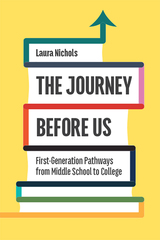 The Journey Before Us: First-Generation Pathways from Middle School to College
Laura Nichols
Rutgers University Press, 2020 More students are enrolling in college than ever before in U.S. history. Yet, many never graduate. In The Journey Before Us, Laura Nichols examines why this is by sharing the experiences of aspiring first-generation college students as they move from middle-school to young adulthood. By following the educational trajectories and transitions of Latinx, mainly second-generation immigrant students and analyzing national data, Nichols explores the different paths that students take and the factors that make a difference. The interconnected role of schools, neighborhoods, policy, employment, advocates, identity, social class, and family reveal what must change to address the “college completion crisis.” Appropriate for anyone wanting to understand their own educational journey as well as students, teachers, counselors, school administrators, scholars, and policymakers, The Journey Before Us outlines what is needed so that education can once again be a means of social mobility for those who would be the first in their families to graduate from college.
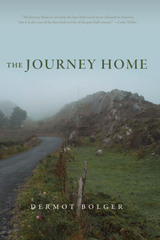 The Journey Home
By Dermot Bolger
University of Texas Press, 2008 2008 — Finalist, ForeWord Magazine Book of the Year Awards, Fiction Category
Young Francis Hanrahan dreams desperately of a life different from that of his country-born, suburban-living parents. On his first day at his first job Francis makes his first real friend. Shay, a would-be older brother, introduces "Hano" to Dublin's appealingly seedy after-hours bars and drug-fueled parties. They are joined by Cait, a troubled teenager who spends her days in a stupor. But the noir thrills of underground Dublin cannot conceal the unemployment, corruption, and violence strangling the city. The Plunkett brothers, masters of "the subtle everyday corruption on which a dynasty was built" will use the friends—with tragic results.
Torn between his friends, his family, and his own ideals, Hano ultimately falls victim to these powerful forces and commits a heinous crime. He flees through the countryside with Cait, wondering, as he narrates the events that set him on this path, if there is a home at the end of it.
Controversial for its gritty portrait of Dublin in the 1980s, The Journey Home is Dermot Bolger's unflinching look at the personal cost of social progress, and those, innocent or not, lost during the journey.
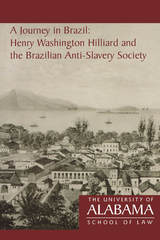 A Journey in Brazil: Henry Washington Hilliard and the Brazilian Anti-Slavery Society
David I. Durham and Paul M. Pruitt Jr.
University of Alabama Press, 2008 A Journey in Brazil: Henry Washington Hilliard and the Brazilian Anti-Slavery Society is an investigative account of the vital career of Henry Washington Hilliard, who had a long and complicated relationship with slavery. A native Southerner, he was a former slave owner and Confederate soldier, but as a member of Congress Hilliard strongly opposed secession. Hilliard supported the constitutional legality of slavery; however, as a moderate he acknowledged the status quo and warned of the dangers of radical positions concerning the issue.
Throughout a diverse career that spanned six decades, Hilliard’s personal challenges, moderated by his faith in Divine Providence, eventually allowed him to return to his ideological roots and find a sense of redemption late in life by becoming an unlikely spokesman for the Brazilian emancipation movement through his association with Joaquim Nabuco. In A Journey in Brazil, authors David I. Durham and Paul M. Pruitt Jr. establish context for Hilliard’s beliefs, document his journey in Brazil, and offer a variety of primary documents—selections from newspapers, transcripts of letters, translations of speeches, and other documents that have never before been published.
AboutOccasional Publications of the Bounds Law Library
This collection offers a series of edited documents that contribute to an understanding of the development of legal history, culture, or doctrine. Series editors Paul M. Pruitt Jr. and David I. Durham have selected a variety of materials—a lecture, diaries, letters, speeches, a ledger, commonplace books, a code of ethics, court reports—to illustrate unique examples of legal life and thought.
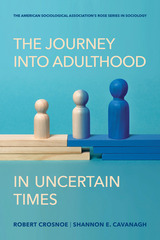 The Journey into Adulthood in Uncertain Times
Robert Crosnoe
Russell Sage Foundation, 2025 Concerns about the welfare of young adults have received increasing public attention. Numerous magazine and newspaper articles ask “Are young adults failing to launch?” and “Are global crises creating generations of lost youth?” These questions are driven by worries that young people are either unable or unwilling to transition to adulthood, even when they have aged past traditional definitions of childhood and adolescence. In The Journey into Adulthood in Uncertain Times, sociologists Robert Crosnoe and Shannon E. Cavanagh examine whether young people today are either refusing or failing to grow up.
Drawing on both quantitative and qualitative survey data over five decades, Crosnoe and Cavanagh find that young adults are, in fact, waiting longer to take on “real” adult roles, such as worker or parent. However, this is not out of a reluctance to grow up. Instead, increased inequality and changes in the economy have forced young people to adapt their lives in new ways. Young adults are now spending more time in school, have more trouble finding their footing in the labor force, and consequently postpone getting married and having children. They also mix and match roles in more complicated ways now than in the past—going back and forth between school and work over longer periods of time or disconnecting parenthood from their romantic relationships. While the period from late teens to mid-twenties does look different now than in the past, the change has been slow and steady rather than a dramatic shift due to social crises. The Great Recession, for example, had a more muted effect on young people’s social and economic attainment and family formation than fears of a lost generation would suggest.
Crosnoe and Cavanagh find that while the panic over young adults today may be somewhat overblown, this conclusion should not obscure some clear concerns. Young adults do struggle with their social and emotional wellbeing. They are more depressed than their counterparts in previous generations, drink less alcohol in ways that suggest less engagement with social life, and express deep distrust of social institutions and the idea of the American Dream. The authors argue that worries about the state of young adulthood today should trigger more reflection about how to support young people rather than how to fix them.
The Journey into Adulthood in Uncertain Times is a comprehensive and illuminating examination of the challenges faced by contemporary young adults.
 Journey into Northern Pennsylvania and the State of New York
Michel-Guillaume St. Jean de Crèvecoeur
University of Michigan Press, 1964 This is the first complete English translation of Journey into Northern Pennsylvania and the State of New York by Michel-Guillaume St. Jean de Crèvecoeur. It presents the rich reflections and tales of an 18th-century Frenchman who lived and traveled in America for 27 years. Soldier-of-fortune, gentleman farmer, friend of Washington and Franklin, Crèvecoeur describes his natural surroundings with a charm and delight unrivaled by any writer but Thoreau. In this book we follow two men, a narrator and his friend, as they witness unfamiliar Native American rituals and visit frontier settlements along the Hudson River. Interwoven are fanciful impressions of the Indigenous communities of the region and sagas of adventure that stretch credibility. More than a straightforward narrative of travel, the book has the ideological goal of attacking the corruption of Old World civilization and contrasting it with a vision of harmony, abundance, and democracy resulting from the American revolution. The work has not previously been translated into English.
Journey Into Personhood
Ruth Cameron Webb
University of Iowa Press, 1994 In Journey into Personhood Ruth Webb tells the story of an individual born with severe cerebral palsy who struggles to become a person in her own eyes as well as in the opinion of those around her. By developing both the inner ability to learn, live, and work independently and the outer ability to convince others to give her the freedom to do so—physically and emotionally—Webb earned her Ph.D. in counseling and guidance. With that validation of her intelligence and competence, she entered upon a fulfilling career working with mentally retarded people and other people with disabilities.
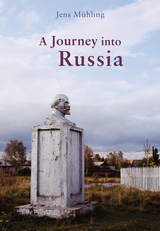 A Journey into Russia
Jens Mühling
Haus Publishing, 2014 When German journalist Jens Mühling met Juri, a Russian television producer selling stories about his homeland, he was mesmerized by what he heard: the real Russia and Ukraine were more unbelievable than anything he could have invented. The encounter changed Mühling’s life, triggering a number of journeys to Ukraine and deep into the Russian heartland on a quest for stories of ordinary and extraordinary people. Away from the bright lights of Moscow, Mühling met and befriended a Dostoevskian cast of characters, including a hermit from Tayga who had only recently discovered the existence of a world beyond the woods, a Ukrainian Cossack who defaced the statue of Lenin in central Kiev, and a priest who insisted on returning to Chernobyl to preach to the stubborn few determined to remain in the exclusion zone.
Unveiling a portion of the world whose contradictions, attractions, and absurdities are still largely unknown to people outside its borders, A Journey into Russia is a much-needed glimpse into one of today’s most significant regions.
The Journey is Everything: A Journal of the Seventies
Helen Bevington
Duke University Press, 1983 “What does one learn by taking a journey, any journey?” Helen Bevington asks. “I’ve taken a shaky trip through a decade (to Russia, to the mailbox, to bed) to the end of the 1970s, about which uncomplimentary and increasingly anxious remarks were made by us all--you, me, and the media.”
This is a book of journeys, to places--Russia, Hawaii, Italy, Yugoslavia, Greece, the South Seas, the Rhine, Australia, New Zealand, New Mexico--and to the classroom at Duke University where she was Professor of English until her retirement in 1976. Since everything is a journey, the book is concerned with travel of all kinds, in books, in memories, in people living and dead, a lighthearted search for Eden on this planet but a more serious search for survival in the troubled decade of the 1970s.
Journey: New And Selected Poems 1969-1999
Kathleen Norris
University of Pittsburgh Press, 2001 Kathleen Norris has touched readers throughout America with her thoughtful and provocative memoirs of faith: Dakota: A Spiritual Geography, The Cloister Walk, and Amazing Grace: A Vocabulary of Faith. She is equally admired for her poetry of engagement with the spiritual world and its landscapes. Journey includes poems from three previous books spanning thirty years, along with a generous selection of new work that continues her radically individual celebration of the sacredness of life.
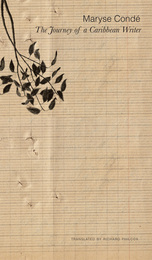 The Journey of a Caribbean Writer
Maryse Condé
Seagull Books, 2014 For nearly four decades, Maryse Condé, best known for her novels Segu and Windward Heights, has been at the forefront of French Caribbean literature. In this collection of essays and lectures, written over many years and in response to the challenges posed by a changing world, she reflects on the ideas and histories that have moved her. From the use of French as her literary language—despite its colonial history—to the agonies of the Middle Passage, at the horrors of African dictatorship, and the politically induced poverty of the Caribbean to migration under globalization, Condé casts her unflinching eye over the world which is her inheritance, her burden, and her future.
Even while paying homage to her intellectual and literary influences—including Frantz Fanon, Leopold Sedar Senghor, and Aimé Césaire—Condé establishes in these pages the singularity of her vision and the reason for the enormous admiration that her writing has garnered from readers and critics alike.
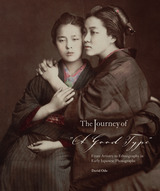 The Journey of “A Good Type”: From Artistry to Ethnography in Early Japanese Photographs
David Odo
Harvard University Press, 2015 When Japan opened its doors to the West in the 1860s, delicately hand-tinted photographic prints of Japanese people and landscapes were among its earliest and most popular exports. Renowned European photographers Raimund von Stillfried and Felice Beato established studios in Japan in the 1860s; the work was soon taken up by their Japanese protégés and successors Uchida Kuichi, Kusakabe Kimbei, and others. Hundreds of these photographs, collected by travelers from the Boston area, were eventually donated to Harvard’s Peabody Museum of Archaeology and Ethnology, where they were archived for their ethnographic content and as scientific evidence of an "exotic" culture.
In this elegant volume, visual anthropologist David Odo examines the Peabody’s collection of Japanese photographs and the ways in which such objects were produced, acquired, and circulated in the nineteenth century. His innovative study reveals the images' shifting and contingent uses—from tourist souvenir to fine art print to anthropological “type” record—were framed by the desires and cultural preconceptions of makers and consumers alike. Understood as both images and objects, the prints embody complex issues of history, culture, representation, and exchange.
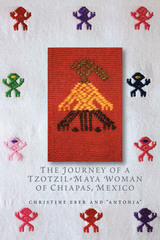 The Journey of a Tzotzil-Maya Woman of Chiapas, Mexico: Pass Well over the Earth
By Christine Eber and “Antonia”
University of Texas Press, 2011 Most recent books about Chiapas, Mexico, focus on political conflicts and the indigenous movement for human rights at the macro level. None has explored those conflicts and struggles in-depth through an individual woman's life story. The Journey of a Tzotzil-Maya Woman of Chiapas, Mexico now offers that perspective in one woman's own words. Anthropologist Christine Eber met "Antonia" in 1986 and has followed her life's journey ever since. In this book, they recount Antonia's life story and also reflect on challenges and rewards they have experienced in working together, offering insight into the role of friendship in anthropological research, as well as into the transnational movement of solidarity with the indigenous people of Chiapas that began with the Zapatista uprising. Antonia was born in 1962 in San Pedro Chenalhó, a Tzotzil-Maya township in highland Chiapas. Her story begins with memories of childhood and progresses to young adulthood, when Antonia began working with women in her community to form weaving cooperatives while also becoming involved in the Word of God, the progressive Catholic movement known elsewhere as Liberation Theology. In 1994, as a wife and mother of six children, she joined a support base for the Zapatista Army of National Liberation. Recounting her experiences in these three interwoven movements, Antonia offers a vivid and nuanced picture of working for social justice while trying to remain true to her people's traditions.
 Journey of an American Pianist
Johannesen, Grant
University of Utah Press, 2007 World famous concert pianist Grant Johannesen completed this memoir shortly before his sudden death in 2005. Born in Salt Lake City, Johannesen gives an account of his childhood and education in Utah, his early career and study in Europe and New York, his growing reputation as a pianist, and his worldwide performances. He writes also of his early marriage to Helen Taylor, who died suddenly in an auto accident, his later marriage to the renowned cellist Zara Nelsova, his activity as a teacher and as a judge in piano competitions, and his octogenarian thoughts for the benefit of younger generations of musicians.
Journey of an American Pianist presents an extensive examination of Johannesen’s artistic commitment and the importance of certain kinds of training and experience, framed in large part as advice to the young pianist seeking a concert career. At the same time, it has plenty of everyday-living experience, showing what pianists do and think about when they are not actually playing or performing.
A Journey of Art and Conflict: Weaving Indra's Net
David Oddie
Intellect Books, 2015 A Journey of Art and Conflict is a deeply personal exploration of David Oddie’s attempts to uncover the potential of the arts as a resource for reconciliation in the wake of conflict and for the creative transformation of conflict itself. It began when Oddie, seeing the fractured world around him, asked himself what he could do to help; that question set him off on travels around the world, including to Palestine, Kosovo, South Africa, India, Northern Ireland, Brazil, and other places. In each location, he met with local people who had suffered from conflict and worked with them to forge artistic networks that have the potential to transform their situation.
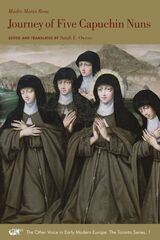 Journey of Five Capuchin Nuns
Madre María Rosa
Iter Press, 2009 Journey of Five Capuchin Nuns contains all the elements of a riveting adventure story. Through the eyes of the Mother Abbess, María Rosa, the reader is taken along on this journey through wars, pirates, disease, travel on the high seas, and treacherous mountain passes in the Andes. Five nuns set out in the early 1700s from their cloistered convent in Madrid, Spain, to travel halfway around the world to Lima, Peru. The journey lasted three years—an odyssey not all of them would complete. Yet, this unique historical document is so much more than a typical travel narrative. It illuminates the eighteenth-century way of life of religious women on both sides of the Atlantic basin. María Rosa’s lively prose attests to the literary connection among women religious writers of Spain and Latin America. This annotated edition and first-ever English translation of the manuscript will be of interest to scholars, students and anyone who wants to learn more about women’s history.
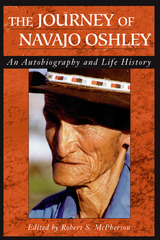 Journey of Navajo Oshley: An Autobiography and Life History
Robert McPherson
Utah State University Press, 2000 Ak'é Nýdzin, or Navajo Oshley, was born sometime between 1879 and 1893. His oral memoir is set on the northern frontier of Navajo land, principally the San Juan River basin in southeastern Utah, and tells the story of his early life near Dennehetso and his travels, before there were roads or many towns, from Monument Valley north along Comb Ridge to Blue Mountain. During the late 19th and early 20th centuries, Anglos and Navajos expanded their use and settlement of lands north of the San Juan. Grazing lands and the Anglo wage economy drew many Navajos across the river. Oshley, a sheepherder, was among the first to settle there. He cared for the herds of his extended family, while also taking supplemental jobs with the growing livestock industry in the area. His narrative is woven with vivid and detailed portraits of Navajo culture: clan relationships, marriages and children, domestic life, the importance of livestock, complex relations with the natural world, ceremonies, trading, and hand trembling.
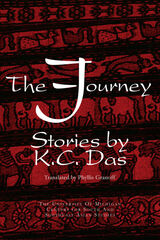 The Journey: Stories by K. C. Das
Phyllis Granoff, Translator
University of Michigan Press, 2000 K. C. Das is deservedly one of the most celebrated writers in India today. He writes primarily in Oriya, the language of his native state of Orissa, where he was born in 1924. A civil servant by profession, Das pursued a second career as a writer of stories, poems, and essays. The stories in this collection take place in an urban setting. The characters are mainly middle class, making them more accessible to North American readers than other examples of contemporary Indian fiction. These are not simple stories. They are about “divides,” about gaps between realities and imagination. In complex shifts between direct dialogue, interior monologue, and interior or imagined dialogue, Das lovingly but mercilessly exposes his characters' thoughts, self-deceptions, and the games they play with each other. These are stories about human weaknesses, the fallibility of human relationships, and the strategies we adopt to cope with our failures. They are about coming to terms with unpleasant, sometimes shocking truths about ourselves and others.
 Journey: The Gateway Theatre Building and Company, 1884-1965
Ian Brown
Intellect Books, 2013 The Gateway Theatre Company between 1953 and 1965 was a major force in developing modern Scottish theatre, moving in 1965 to become the Royal Lyceum Theatre Company. The Gateway Theatre and its company were therefore highly influential in the development of theatre in Scotland. They encouraged new writing and young performers to establish a vibrant contemporary tradition of Scottish theatre in a manner complementary to, and at times more important than, that of its sister theatre, the Citizens in Glasgow. Both theatre building and company are regarded with enormous affection and respect. This book provides authoritative brief histories of the building and the company incorporating much original research, an essay on the links between the theatre and the Church of Scotland (its landlord post second world war), and appreciations of two leading figures in the operation of the theatre and the company. These are Sadie Aitken, 'the Caledonian Lilian Bayliss' (a theatrical legend), and Robert Kemp (playwright and a key figure in post war theatre).
A Journey through Afghanistan
David Chaffetz
University of Chicago Press, 2002 Shortly before the Soviet invasion of Afghanistan, David Chaffetz slipped from the protection of Western culture and immersed himself in the customs, fears, and hopes of the Afghan people, setting out by car and on horseback for a long journey through the northwestern quarter of the country. A Journey through Afghanistan is the story, told in vivid, descriptive prose, of his experience—an account that reveals more about the Afghan people themselves than most books written either before or since.
A Journey through Philosophy in 101 Anecdotes
Nicholas Rescher
University of Pittsburgh Press, 2015 Nicholas Rescher presents the first comprehensive chronology of philosophical anecdotes, spanning from antiquity to the current era. He introduces us to the major thinkers, texts, and historical periods of Western philosophy, recounting many of the stories philosophers have used over time to engage with issues of philosophical concern: questions of meaning, truth, knowledge, value, action, and ethics. Rescher’s anecdotes touch on a wide range of themes—from logic to epistemology, ethics to metaphysics—and offer much insight into the breadth and depth of philosophical inquiry. This book illustrates the various ways philosophers throughout history have viewed the issues in their field, and how anecdotes can work to inform and encourage philosophical thought.
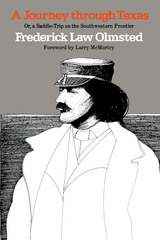 A Journey through Texas; or, a Saddle-Trip on the Southwestern Frontier
By Frederick Law Olmsted
University of Texas Press, 1978 Early in the year 1854 Frederick Law Olmsted, a young New England journalist, crossed the Louisiana border and set off on horseback into the teeth of the Texas winter. In A Journey through Texas he recounts his travels along the Old San Antonio Road through East Texas' piney woods, the dry prairies further west, the chaparral of South Texas, the coastal prairies, and the rich bottomlands around Houston and Galveston. Olmsted does not romanticize the discomforts of his trip—the monotonous food, crude housing, wet and dry northers, rough companions—yet his book reflects a sense of limitless possibility for this new and open country. The cultured Easterner remembers in relentless detail the squalor and brutality met with in parts of East Texas, but he writes fondly of the civility and cleanliness of the German settlements around New Braunfels. In his introductory "A Letter to a Southern Friend," omitted in earlier reprints, Olmsted sets forth his views opposing the extension of slavery into the West and promoting free-soil agriculture for frontier states. The remarkably versatile Olmsted is best known as the founder of landscape architecture in America and for works including Central Park and Stanford University. In his Foreword, Larry McMurtry calls A Journey through Texas an "intelligent, lively, readable book, packed with keen observation and lightened by a delicate strain of humor."
 Journey Through the Afterlife: Ancient Egyptian Book of the Dead
John H. Taylor
Harvard University Press, 2010 The Book of the Dead is not a single text but a compilation of spells that the ancient Egyptians believed would assist them in the afterlife as they made their perilous journey toward the realm of the gods and the ultimate state of eternity. No two copies are identical. The spells are often accompanied by colored vignettes, which graphically show the imagined landscape of the Netherworld, the gods and demons whom the deceased will meet, and the critical “weighing of the heart”—the judgment that will determine whether the traveler will be admitted into the afterlife or condemned to destruction by the monstrous “Devourer.”With contributions from leading scholars and detailed catalog entries that interpret the spells and painted scenes, this fascinating and important book affords a greater understanding of ancient Egyptian belief systems and poignantly reveals the hopes and fears of mortal man about the “world” beyond death. The whole is beautifully illustrated with specially commissioned photographs of these exceptional papyri and an array of contextual funerary objects—painted coffins, gilded masks, amulets, jewelry, tomb figurines, and mummy trappings.
 A Journey through the West: Thomas Rodney’s 1803 Journal from Delaware to the Mississippi Territory
Thomas Rodney
Ohio University Press, 1997 In A Journey through the West, Thomas Rodney writes vividly about flea-infested taverns, bad roads, drunken crew members, squatters, Indians sodden berths, food from the wild and treacherous waters. His is one of the most detailed early-nineteenth-century travel accounts. Rodney, a Revolutionary War patriot and veteran, had been active in Delaware politics and had served in the Continental Congress. In 1803, President Thomas Jefferson appointed him as a land commissioner and a territorial judge in the newly formed Mississippi Territory. To assume his duties, Rodney and a small party traveled overland from Delaware across the length of southern Pennsylvania to Wheeling, (West) Virginia. From there, they boarded their newly constructed boat on the Ohio River and rowed, sailed, and drifted along the borders of (West) Virginia, Ohio, Indiana, Illinois, and Kentucky. Finally they left the clear rapids of the Ohio and entered the muddy yet majestic Mississippi. They traveled southwesterly into a vast, exotic wilderness valley. The western shore of the Mississippi was still owned by Spain, and foreign soldiers were spotted. Under pressure to meet Rodney’s deadline for arrival in Mississippi Territory, the travelers were grateful for the Mississippi’s fast current. Yet in the journey’s last days they were faced with adventures and with near disaster when their boat struck a snag and partially sank. Rodney kept a precise journal and sent letters to President Jefferson documenting his trek from the settled East through the barely chartered paths of the western wilderness. He hobnobbed with Meriwether Lewis, enjoyed the hospitality of Harman Blennerhassett, and received a tour of Cincinnati from Arthur St. Clair. Dwight Smith and Ray Swick have compiled, edited and annotated Rodney’s story to present it in complete form for the first time. A Journey through the West is both a travel adventure and a colorful glimpse into the life of his day.
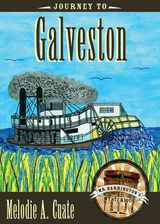 Journey to Galveston
Melodie A. Cuate
Texas Tech University Press, 2014 Book Seven in the award-winning series for middle readers, a sobering window on slavery in Texas
A struggle over a bowl of popcorn begins another time-traveling adventure for Nick, Jackie, and Hannah. When Mr. Barrington’s trunk magically appears on the Taylors’ kitchen table, a family of slaves steps out, followed by a snapping dog. Jackie is mistaken for an escaped slave and kidnapped by a hideous man. Trying to save her, Hannah and Nick are transported back to June 1865 only to discover that even though the Civil War has ended months before, many Texas plantation owners still own slaves.
Befriended by twins Sam and Lily, the time travelers witness horrific truths of plantation life: whippings, beatings, and families being torn apart. After Lily is sold to another plantation in Galveston, they devise with Sam a plan to rescue her. Their race against time takes them through a spooky graveyard and over a river teeming with alligators, with vicious hounds in close pursuit.
With the absorbing pace and historic detail that Mr. Barrington’s Mysterious Trunk fans have come to expect, Cuate leads her protagonists, and her young readers, to the first Juneteenth.
Journey to Goliad
Melodie A. Cuate
Texas Tech University Press, 2009 Hannah followed Nick's gaze to gray stone walls. In the corner, the highest point on the horizon, stood a chapel with a bell tower topped with a cross. It was Presidio La Bahia. They were headed back to the fort in Goliad. On the top of the wall, seven soldiers aimed muskets toward the prairie and hills."What did we get ourselves into this time?" Hannah murmured.When Mr. Barrington brings his trunk on a field trip to Goliad, Hannah, Jackie, and Nick find themselves back in the Texas Revolution. It’s 1836, just weeks before Colonel James Fannin and General José de Urrea face off at the Battle of Coleto and Santa Anna orders the execution of all prisoners. Are Nick and his new friend Benjamin Hughes being watched by a spy? Will the girls succeed in helping Francita Alavez, the Angel of Goliad, rescue Fannin’s men?
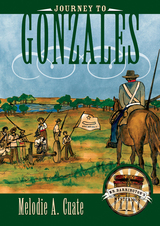 Journey to Gonzales
Melodie A. Cuate
Texas Tech University Press, 2008 Nick is on a mission. Deeply troubled by the loss of a young friend at the Battle of San Jacinto, he wants desperately to return to the scene of the battle—to alter history. But when he furtively opens the mysterious trunk, now in Mr. Barrington’s attic, he is transported instead to Gonzales, Texas, in 1835. There he meets many historical characters, including the young Alamo defenders William King, John Gaston, and Galba Fuqua. (Will, Johnny, and Galba are introduced in Book 1 of the series.) Once befriended by them, Nick finds himself caught up in the excitement leading up to the Battle of Gonzales.Hannah and Jackie, knowing they must stop Nick and bring him back safely, follow by trunk in hot pursuit. After falling down a riverbank, Hannah is rescued by Lieutenant Ramirez, a member of the Alamo de Parras Company of dragoons sent to retrieve the Gonzales “Come and Take It” cannon. The girls are escorted to his camp, where they learn about life in the Mexican army and the tensions that are building in Texas.
A Journey to Inner Africa
Egor Kovalevsky
Amherst College Press, 2020 In 1847, Russian military engineer and diplomat Egor Petrovich Kovalevsky embarked on a journey through what is today Egypt, Sudan, Eritrea, and Ethiopia, recording his impressions of a region in flux. Invited by Egyptian ruler Mohammed Ali to look for gold and construct mines in the area between the Blue and White Nile, Kovalevsky captured the social milieu of both elites and ordinary people as well as compiled a rich record of the Upper Nile’s climate and natural resources. A Journey to Inner Africa, masterfully translated into English for the first time by Anna Aslanyan, is both a tale of encounter between Russia and northern Africa and an important document in the history and development of the Russian imperial project.
Contributions by Egor Kovalevsky, Anna Aslanyan, Sergey Glebov, David Schimmelpenninck, Mukaram Hhana, and Michal Wasiucionek
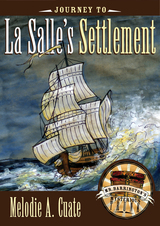 Journey to La Salle’s Settlement
Melodie A. Cuate
Texas Tech University Press, 2010 “Now don’t change history while I’m gone,” Mr. B had said before leaving Hannah and Nick to lock the trunk in the classroom closet. Despite Hannah’s pledge to comply, a trickle of beach sand and a slosh of seawater turn to a flood tide after she lifts the lid. The siblings, along with their friend Jackie, find themselves in a wooden canoe off the seventeenth-century Texas coast—with a gale approaching and nothing to get them home but a magic ring and a list of riddles. No sooner does their rescuer, Sébastien, haul the trio aboard ship than they are pressed into service on the doomed French bark La Belle. Blamed for shipwreck, attacked on shore by arrow-firing Karankawa warriors, and chased by alligators, Hannah, Jackie, and Nick rush to complete the scavenger hunt with the aid of the settlement’s resourceful colonists. From the Talon family they learn survival skills in the dense, dangerous woods—as they teach a few lessons of their own. But when a feverish Hannah collapses on the night of La Salle’s long-awaited return, will a gold coin turn up in time to redeem her life?
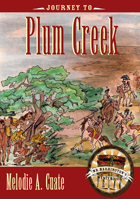 Journey to Plum Creek
Melodie A. Cuate
Texas Tech University Press, 2012 The cave at Mount Bonnell, not far from the school Hannah, Nick, and Jackie attend in Austin, has attracted many visitors over the years, from Indians to Boy Scouts to historic reenactors. But when Jackie’s grandfather takes the trio there on an impromptu excursion, they meet a traveler of an entirely different sort: explorer Elijah Barrington—ancestor of their formidable history teacher—who has arrived there from the past. And accompanying him is a trunk that looks oddly familiar.A slam of the trunk’s lid Translatorports the girls into a melee of swirling hoofbeats and bright war paint. Before they know it, they’ve been taken captive by Comanche warriors in a raid on Victoria, Texas, in 1840. Hannah is forced into servitude, while Jackie is adopted as a daughter. As they learn about life among the natives and participate reluctantly in another raid, Nick races east from Mount Bonnell on horseback in the company of Bigfoot Wallace, Jack Hays, and other Texas Rangers.In a fast-paced adventure infused with the fascinating cultural and historical details Melodie Cuate’s stories are known for, her latest installment pits the old order against the new as they square off in the Battle of Plum Creek—and make friends in unexpected places.
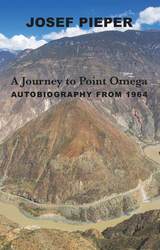 A Journey to Point Omega: Autobiography from 1964
Josef Pieper
St. Augustine's Press, 2018 This volume, the original version of which was published in 1988, brings to a close the autobiographical writings of a modern Christian philosopher who lived through the two World Wars and the ecclesiastical upheaval in the Catholic Church in the context of the Second Vatican Council. What stamps this philosopher throughout the course of his life – with all its social and political uncertainties – is his constant dedication to truth and his manifest unswerving integrity.
Themes with which the reader of his previous works would be well acquainted recur in this volume. The dedicated Catholic philosopher, who preferred his independence as a trainer of teachers to the less independent role of a professor in a Catholic university, was quite prepared to criticize developments in the Church which resulted from Vatican II. In his defense of the sacred, which he deemed threatened by popularizing trends in the Church, he criticized what he saw as the watered down language in modern German translations of Church liturgical texts; the growing preference for secular garb; and the compromising developments which saw the sacramental signs – surrounding baptism, for instance – being reduced to such an extent that they no longer had the power to signify their sacred meaning even to a well-intentioned congregation.
A great lover of the philosophy of Plato, Augustine, and Aquinas – among many others –, Pieper highlighted the need for living a life of truth. He did not consider truth to be merely something abstract but as something to be lived existentially. While he could explain his philosophy in clear rational terms, something which especially stood to him in his post-war lectures to eager students who were hungry for intellectual guidance and leadership, the great interest of his philosophy was, possibly, his preoccupation with mystery – that which impinges on our inner lives but frustrates all our attempts to account for it in purely rational terms.
As a philosopher – one might say a Christian philosopher – Pieper seems to have observed the traditional boundaries drawn between philosophy and theology. His generation was exposed to the modernist debates in the Church. It would have been deemed heretical to say that the Divine could be grasped by our purely human thought processes – access to the Divine being only possible through faith and grace. Pieper was no heretic. But he was also not altogether conservative. In fact, his philosophy, closely allied to existentialism – despite his care, for instance, to distance himself from the negative existentialism of Sartre – focused on the individual’s inner existential grasp of the most profound reality. Truth is to be found within us, even if it remains a mystery. What lies beyond death is, for the individual, the ultimate mystery.
Journey to San Jacinto
Melodie A. Cuate
Texas Tech University Press, 2007 WInner of the 2008 Western Heritage Award, Juvenile BooksWhere has Mr. Barrington gone? Follow Hannah, Nick, and Jackie back in time to the Texas Revolution as they search for clues leading to the missing Texas history teacher. Mr. Barrington’s niece, Miss Barrington, begins the countdown to the past when she opens the lid on the mysterious trunk belonging to her uncle. She and the girls suddenly find themselves in 1836, traveling with a Texian soldier transporting ammunition for General Sam Houston only days before the Battle of San Jacinto.Meanwhile, Nick discovers what life is like as a soldier after the Mexican army finds him hiding in a tree. Join the children on their historic adventure as the Battle of San Jacinto unfolds before their eyes and they become acquainted with the famous Texian and Mexican soldiers who shaped the future of Texas.
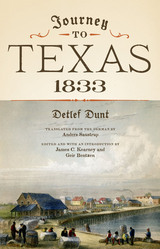 Journey to Texas, 1833
By Detlef Dunt. Translated by Anders Saustrup, edited and with an introduction by James C. Kearney and Geir Bentzen
University of Texas Press, 2015 In 1834, a German immigrant to Texas, D. T. F. (Detlef Thomas Friedrich) Jordt, aka Detlef Dunt, published Reise nach Texas, a delightful little book that praised Texas as “a land which puts riches in [the immigrant’s] lap, which can bring happiness to thousands and to their descendants.” Dunt’s volume was the first one written by an on-the-ground observer to encourage German immigration to Texas, and it provides an unparalleled portrait of Austin’s Colony from the lower Brazos region and San Felipe to the Industry and Frelsburg areas, where Dunt resided with Friedrich Ernst and his family. Journey to Texas, 1833 offers the first English translation of Reise nach Texas. It brings to vivid life the personalities, scenic landscapes, and customs that Dunt encountered in colonial Texas on the eve of revolution, along with his many practical suggestions for Germans who intended to emigrate. The editors’ introduction describes the social, political, and economic conditions that prompted Europeans to emigrate to Texas and provides biographical background on Dunt and his connection with Friedrich Ernst. Also included in the volume are a bibliography of German works about Texas and an interpretive essay discussing all of the early German literature about Texas and Dunt’s place within it. Expanding our knowledge of German immigration to Texas beyond the more fully documented Hill Country communities, Journey to Texas, 1833 also adds an important chapter to the story of pre-Revolutionary Texas by a sophisticated commentator.
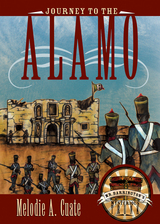 Journey to the Alamo
Melodie A. Cuate
Texas Tech University Press, 2006 “To teach kids history, try time travel. Cuate, a veteran schoolteacher, spins the tale of a seventh-grader Hannah, her brother Nick, and her friend Jackie. They are intrigued by a mysterious trunk belonging to Hannah’s new history teacher. When they open it, something magical happens, and they travel back in time to the Alamo, where the famous siege is underway. . . . Are they stuck in 1836 forever?”—Southern Living“Hannah stared a second time at the crumbling fossil of a building before her. Her eyes opened wide. This was the same building as the wooden figure Nick had taken from her. This building was the Alamo, the Alamo of the past! Mr. Barrington’s voice echoed in her mind, ‘You will choose an event in Texas history and become part of it.’”Hannah finds nothing adventurous about the seventh grade—until she meets her new Texas history teacher, Mr. Barrington, who brings in a mysterious trunk and assigns an unusual project: to become a part of history. While seeking inspiration among the historical artifacts contained in the trunk, Hannah, her brother Nick, and her friend Jackie are suddenly thrown back through time, finding themselves at an old Spanish mission in San Antonio. It’s the Alamo, and the famous battle is about to begin!Join Hannah, Nick, and Jackie as they dodge cannonballs and bayonets; meet William Barret Travis, David Crockett, and Jim Bowie; and learn valuable lessons about honor and the importance of history.
Journey to the Ants: A Story of Scientific Exploration
Bert Hölldobler and Edward O. Wilson
Harvard University Press, 1994 Richly illustrated and delightfully written, Journey to the Ants combines autobiography and scientific lore to convey the excitement and pleasure the study of ants can offer. Bert Hölldobler and E. O. Wilson interweave their personal adventures with the social lives of ants, building, from the first minute observations of childhood, a remarkable account of these abundant insects’ evolutionary achievement.
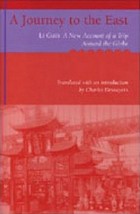 A Journey to the East: Li Gui's A New Account of a Trip Around the Globe
Charles Desnoyers
University of Michigan Press, 2004 Li Gui's record of his epic 1876 journey marks China's first officially sanctioned eyewitness account of people and places around the world. A representative to the U.S. Centennial in Philadelphia, Li Gui went on to style himself as the first Chinese official to circle the globe, and his travel diary offers a revealing window into the Chinese view of the West in the late nineteenth century. As the first full-length English translation of this landmark excursion, A Journey to the East provides a welcome addition to primary source material on this time period. Li Gui's experiences traveling through the United States offer a unique perspective on the newest technological and urban developments of the day in Philadelphia, New York, Washington, D.C., and other major U.S. cities. In his day, these observations on Japan, the United States, Great Britain, France, and their colonial possessions helped the Chinese government construct a more accurate picture of imperial power and statecraft abroad. Later, the diary became required reading for reformers and revolutionaries from Li Hongzhang to Mao Zedong. Li's journal also provides rich material for exploring a number of theoretical issues stemming from the Sino-foreign encounter. He devotes considerable space to debunking the views of his colleagues regarding the importance of technology, finance, and communication. Most striking of all are his thoughts on gender and education, which place him within the ranks of "progressive" thinkers in any nineteenth-century society. Undoubtedly important to China specialists, A Journey to the East will also appeal to anyone with an interest in American history, Asian studies, world history and Asian-American studies. Charles Desnoyers is Associate Professor and Chair in the Department of History and Director of Asian Studies at La Salle University.
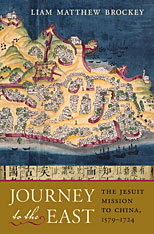 Journey to the East: The Jesuit Mission to China, 1579–1724
Liam Matthew Brockey
Harvard University Press, 2008 It was one of the great encounters of world history: highly educated European priests confronting Chinese culture for the first time in the modern era. This “journey to the East” is explored by Liam Brockey as he retraces the path of the Jesuit missionaries who sailed from Portugal to China, believing that, with little more than firm conviction and divine assistance, they could convert the Chinese to Christianity. Moving beyond the image of Jesuits as cultural emissaries, his book shows how these priests, in the first concerted European effort to engage with Chinese language and thought, translated Roman Catholicism into the Chinese cultural frame and eventually claimed two hundred thousand converts.
The first narrative history of the Jesuits’ mission from 1579 until the proscription of Christianity in China in 1724, this study is also the first to use extensive documentation of the enterprise found in Lisbon and Rome. The peril of travel in the premodern world, the danger of entering a foreign land alone and unarmed, and the challenge of understanding a radically different culture result in episodes of high drama set against such backdrops as the imperial court of Peking, the villages of Shanxi Province, and the bustling cities of the Yangzi Delta region. Further scenes show how the Jesuits claimed conversions and molded their Christian communities into outposts of Baroque Catholicism in the vastness of China. In the retelling, this story reaches across continents and centuries to reveal the deep political, cultural, scientific, linguistic, and religious complexities of a true early engagement between East and West.
Journey to the West: A Play
Mary Zimmerman
Northwestern University Press, 2011 This adaptation of a late sixteenth-century classic Chinese comic novel, Journey to the West, based on Anthony C. Yu’s translation, takes as its point of departure the true story of a seventh-century monk and his fabled pilgrimage from China to India in search of sacred texts. Mixing whimsy with spiritual weight, Zimmerman’s script combines comedy, adventure, and satire in a moving allegory of human perseverance.
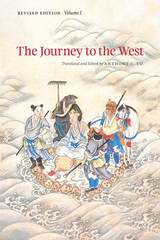 The Journey to the West, Revised Edition, Volume 1
Translated and Edited by Anthony C. Yu
University of Chicago Press, 2012 Read the legendary Chinese classic that inspired the hit game Black Myth: Wukong! Anthony C. Yu’s translation of The Journey to the West,initially published in 1983, introduced English-speaking audiences to the classic Chinese novel in its entirety for the first time. Written in the sixteenth century, The Journey to the West tells the story of the fourteen-year pilgrimage of the monk Xuanzang, one of China’s most famous religious heroes, and his three supernatural disciples, in search of Buddhist scriptures. Throughout his journey, Xuanzang fights demons who wish to eat him, communes with spirits, and traverses a land riddled with a multitude of obstacles, both real and fantastical. An adventure rich with danger and excitement, this seminal work of the Chinese literary canonis by turns allegory, satire, and fantasy.
With over a hundred chapters written in both prose and poetry, The Journey to the West has always been a complicated and difficult text to render in English while preserving the lyricism of its language and the content of its plot. But Yu has successfully taken on the task, and in this new edition he has made his translations even more accurate and accessible. The explanatory notes are updated and augmented, and Yu has added new material to his introduction, based on his original research as well as on the newest literary criticism and scholarship on Chinese religious traditions. He has also modernized the transliterations included in each volume, using the now-standard Hanyu Pinyin romanization system. Perhaps most important, Yu has made changes to the translation itself in order to make it as precise as possible.
One of the great works of Chinese literature, The Journey to the West is not only invaluable to scholars of Eastern religion and literature, but, in Yu’s elegant rendering, also a delight for any reader.
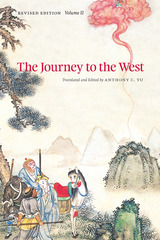 The Journey to the West, Revised Edition, Volume 2
Translated and Edited by Anthony C. Yu
University of Chicago Press, 2012 Read the legendary Chinese classic that inspired the hit game Black Myth: Wukong! Anthony C. Yu’s translation of The Journey to the West,initially published in 1983, introduced English-speaking audiences to the classic Chinese novel in its entirety for the first time. Written in the sixteenth century, The Journey to the West tells the story of the fourteen-year pilgrimage of the monk Xuanzang, one of China’s most famous religious heroes, and his three supernatural disciples, in search of Buddhist scriptures. Throughout his journey, Xuanzang fights demons who wish to eat him, communes with spirits, and traverses a land riddled with a multitude of obstacles, both real and fantastical. An adventure rich with danger and excitement, this seminal work of the Chinese literary canonis by turns allegory, satire, and fantasy.
With over a hundred chapters written in both prose and poetry, The Journey to the West has always been a complicated and difficult text to render in English while preserving the lyricism of its language and the content of its plot. But Yu has successfully taken on the task, and in this new edition he has made his translations even more accurate and accessible. The explanatory notes are updated and augmented, and Yu has added new material to his introduction, based on his original research as well as on the newest literary criticism and scholarship on Chinese religious traditions. He has also modernized the transliterations included in each volume, using the now-standard Hanyu Pinyin romanization system. Perhaps most important, Yu has made changes to the translation itself in order to make it as precise as possible.
One of the great works of Chinese literature, The Journey to the West is not only invaluable to scholars of Eastern religion and literature, but, in Yu’s elegant rendering, also a delight for any reader.
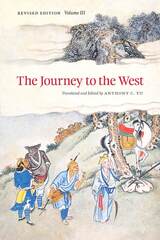 The Journey to the West, Revised Edition, Volume 3
Translated and Edited by Anthony C. Yu
University of Chicago Press, 2012 Read the legendary Chinese classic that inspired the hit game Black Myth: Wukong! Anthony C. Yu’s translation of The Journey to the West,initially published in 1983, introduced English-speaking audiences to the classic Chinese novel in its entirety for the first time. Written in the sixteenth century, The Journey to the West tells the story of the fourteen-year pilgrimage of the monk Xuanzang, one of China’s most famous religious heroes, and his three supernatural disciples, in search of Buddhist scriptures. Throughout his journey, Xuanzang fights demons who wish to eat him, communes with spirits, and traverses a land riddled with a multitude of obstacles, both real and fantastical. An adventure rich with danger and excitement, this seminal work of the Chinese literary canonis by turns allegory, satire, and fantasy.
With over a hundred chapters written in both prose and poetry, The Journey to the West has always been a complicated and difficult text to render in English while preserving the lyricism of its language and the content of its plot. But Yu has successfully taken on the task, and in this new edition he has made his translations even more accurate and accessible. The explanatory notes are updated and augmented, and Yu has added new material to his introduction, based on his original research as well as on the newest literary criticism and scholarship on Chinese religious traditions. He has also modernized the transliterations included in each volume, using the now-standard Hanyu Pinyin romanization system. Perhaps most important, Yu has made changes to the translation itself in order to make it as precise as possible.
One of the great works of Chinese literature, The Journey to the West is not only invaluable to scholars of Eastern religion and literature, but, in Yu’s elegant rendering, also a delight for any reader.
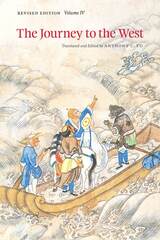 The Journey to the West, Revised Edition, Volume 4
Translated and Edited by Anthony C. Yu
University of Chicago Press, 2012 Read the legendary Chinese classic that inspired the hit game Black Myth: Wukong! Anthony C. Yu’s translation of The Journey to the West,initially published in 1983, introduced English-speaking audiences to the classic Chinese novel in its entirety for the first time. Written in the sixteenth century, The Journey to the West tells the story of the fourteen-year pilgrimage of the monk Xuanzang, one of China’s most famous religious heroes, and his three supernatural disciples, in search of Buddhist scriptures. Throughout his journey, Xuanzang fights demons who wish to eat him, communes with spirits, and traverses a land riddled with a multitude of obstacles, both real and fantastical. An adventure rich with danger and excitement, this seminal work of the Chinese literary canonis by turns allegory, satire, and fantasy.
With over a hundred chapters written in both prose and poetry, The Journey to the West has always been a complicated and difficult text to render in English while preserving the lyricism of its language and the content of its plot. But Yu has successfully taken on the task, and in this new edition he has made his translations even more accurate and accessible. The explanatory notes are updated and augmented, and Yu has added new material to his introduction, based on his original research as well as on the newest literary criticism and scholarship on Chinese religious traditions. He has also modernized the transliterations included in each volume, using the now-standard Hanyu Pinyin romanization system. Perhaps most important, Yu has made changes to the translation itself in order to make it as precise as possible.
One of the great works of Chinese literature, The Journey to the West is not only invaluable to scholars of Eastern religion and literature, but, in Yu’s elegant rendering, also a delight for any reader.
Journey to the West, Volume 1
Translated by Anthony C. Yu
University of Chicago Press, 1977 First published in 1952, The Journey to the West, volume I, comprises the first twenty-five chapters of Anthony C. Yu's four-volume translation of Hsi-yu Chi, one of the most beloved classics of Chinese literature. The fantastic tale recounts the sixteen-year pilgrimage of the monk Hsüan-tsang (596-664), one of China's most illustrious religious heroes, who journeyed to India with four animal disciples in quest of Buddhist scriptures. For nearly a thousand years, his exploits were celebrated and embellished in various accounts, culminating in the hundred-chapter Journey to the West, which combines religious allegory with romance, fantasy, humor, and satire.
Journey to the West, Volume 2
Translated by Anthony C. Yu
University of Chicago Press, 1978 The Journey to the West, volume 2, comprises the second twenty-five chapters of Anthony C. Yu's four-volume translation of Hsi-yu Chi, one of the most beloved classics of Chinese literature. The fantastic tale recounts the sixteen-year pilgrimage of the monk Hsüan-tsang (596-664), one of China's most illustrious religious heroes, who journeyed to India with four animal disciples in quest of Buddhist scriptures. For nearly a thousand years, his exploits were celebrated and embellished in various accounts, culminating in the hundred-chapter Journey to the West, which combines religious allegory with romance, fantasy, humor, and satire.
Journey to the West, Volume 3
Translated by Anthony C. Yu
University of Chicago Press, 1980 The Journey to the West, volume 3, comprises the third twenty-five chapters of Anthony C. Yu's four-volume translation of Hsi-yu Chi, one of the most beloved classics of Chinese literature. The fantastic tale recounts the sixteen-year pilgrimage of the monk Hsüan-tsang (596-664), one of China's most illustrious religious heroes, who journeyed to India with four animal disciples in quest of Buddhist scriptures. For nearly a thousand years, his exploits were celebrated and embellished in various accounts, culminating in the hundred-chapter Journey to the West, which combines religious allegory with romance, fantasy, humor, and satire.
Journey to the West, Volume 4
Translated by Anthony C. Yu
University of Chicago Press, 1983 The Journey to the West, volume 4, comprises the last twenty-five chapters of Anthony C. Yu's four-volume translation of Hsi-yu Chi, one of the most beloved classics of Chinese literature. The fantastic tale recounts the sixteen-year pilgrimage of the monk Hsüan-tsang (596-664), one of China's most illustrious religious heroes, who journeyed to India with four animal disciples in quest of Buddhist scriptures. For nearly a thousand years, his exploits were celebrated and embellished in various accounts, culminating in the hundred-chapter Journey to the West, which combines religious allegory with romance, fantasy, humor, and satire.
Journey toward the Cradle of Mankind
Guido Gozzano
Northwestern University Press, 1996 The distinguished Italian poet Guido Gozzano (1883-1916) embarked for India in February 1912, ostensibly to treat his tuberculosis. His trip lasted three months and, all told, he spent six weeks on the subcontinent. His dispatches home for a newspaper are collected and published here in English for the first time.
The extent of Gozzano's travels--to Ceylon, Goa, Agra, Jaipur--makes one wonder how the writer could visit all or even most of the places he so vividly describes. "I did not honestly think I would find so much of it intact," the spellbound Gozzano repeats to himself, before what he must shortly recognize as prodigious evidence of decay.
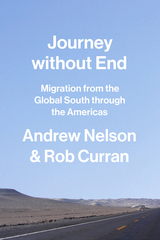 Journey without End: Migration from the Global South through the Americas
Rob Curran and Andrew Nelson
Vanderbilt University Press, 2022 Journey without End chronicles the years-long journey of "extracontinentales"—African and South Asian migrants moving through Latin America toward the United States. Based on five years of collaborative research between a journalist and an anthropologist, this book makes an engrossing, sometimes surreal, narrative-driven critique of how state-level immigration policy fails extracontinental migrants.
The book begins with Kidane, an Eritrean migrant who has left his pregnant wife behind to make the four-year trip to North America; it then picks up the natural disaster–riddled voyage of Roshan and Kamala Dhakal from Nepal to Ecuador; and it continues to the trials of Cameroonian exile Jane Mtebe, who becomes trapped in a bizarre beachside resort town on the edge of the Darién Gap—the gateway from South to Central America.
Journey without End follows these migrants as their fitful voyages put them in a semi-permanent state of legal and existential liminality. Mercurial policy creates profit opportunities that transform migration bottlenecks—Quito's tourist district, a Colombian beachside resort, Panama's Darién Gap, and a Mexican border town—into spontaneous migration-oriented spaces rife with racial, gender, and class exploitation. Throughout this struggle, migrant solidarity allows for occasional glimpses of subaltern cosmopolitanism and the possibility of mobile futures.
Journeys beyond the Pale: Yiddish Travel Writing in the Modern World
Leah V. Garrett
University of Wisconsin Press, 2003 Journeys beyond the Pale is the first book to examine how Yiddish writers, from Mendele Moycher Sforim to Der Nister to the famed Sholem Aleichem, used motifs of travel to express their complicated relationship with modernization. The story of the Jews of the Pale of settlement encompasses current-day Russia, the Ukraine, Belarus, and Poland.
Journeys from a Desert Road
Mary Clyde
Signature Books, 2024 When a sheer, brilliant light erupts in the desert night, Jack recognizes it as the awesome and destructive power of an atomic bomb. But in another world, far removed from Jack’s mind, his family sit by his side after a traumatic car accident has rendered him comatose. Jack, relying on fantasies he and his sister fabricated as teenagers, struggles to lead the people he loves out of radiation-contaminated Phoenix as his family keep vigil in his hospital room, marshaling their reserves of patience and determination.
Yet even as Jack and his family experience these different realities, events from one world drift into the other, reshaping and influencing one another as they move toward a climactic union. Whether fleeing nuclear disaster or pacing by a sickbed, these flawed and stressed individuals behave with fierce loyalty and an equally fierce love that forces an ascension of hope and survival.
 Journeys from Scandinavia: Travelogues of Africa, Asia, and South America, 1840—2000
Elisabeth Oxfeldt
University of Minnesota Press, 2010 For all of the scholarship done on postcolonial literatures, little has been applied to Scandinavian writing. Yet, beginning with the onset of tourism beyond Scandinavia in the 1840s, a compelling body of prose works documents Scandinavian attitudes toward foreign countries and further shows how these Scandinavian travelers sought to portray themselves to uncharted cultures. Focusing on Danish and Norwegian travelogues, Elisabeth Oxfeldt traces the evolution of Scandinavian travel writing over two centuries using pivotal texts from each era, including works by Hans Christian Andersen, Knut Hamsun, and Karen Blixen (Isak Dinesen). Oxfeldt situates each one in its historical and geopolitical context, and her close readings delineate how each travelogue reflects Scandinavia’s ongoing confrontation between Self and the non-European cultural Other. A long-overdue examination of travel literature produced by some of Denmark and Norway’s greatest writers, Journeys from Scandinavia unpacks the unstable constructions of Scandinavian cultural and national identity and, in doing so, complicates the common assumption of a homogeneous, hegemonic Scandinavia.
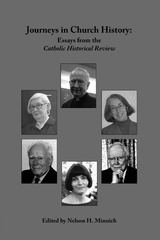 Journeys in Church History
Nelson Minnich
Catholic University of America Press, 2015 This collection of essays is taken from the pages of The Catholic Historical Review, the official organ of the American Catholic Historical Association and the only scholarly journal under Catholic auspices in the English-speaking world devoted to the history of the Universal Church. Journeys in Church History offers reflections from six leading contemporary church historians, who describe in their own words how they have come to practice their craft. They trace their family and educational backgrounds, the themes that attracted their attention, the challenges they encountered in researching them, the new methodologies they adopted to answer questions, and the reception given to their findings. They also tell of their experiences in the classroom, both as students and teachers, the difficulties they encountered in their careers due to prejudices based on gender or religion, and how the discipline of church history has changed over their lifetimes. Their often entertaining accounts will serve to inform and inspire fellow historians, both young and old.
The contributors to this volume are: Elizabeth Clark, who pioneered studies of the role of women in the early Church. Caroline Bynum showed how Christians viewed gender and the human body. Jean Delumeau studies the religious attitudes (mentalité) of the ordinary faithful and how these were shaped during the medieval and early modern periods. John W. O'Mally documents that Renaissance humanism was not pagan but profoundly Christian. The promotion of institutions of higher education under the auspices of the Catholic Church in America has been studied by J. Philip Gleason. Margaret Lavinia Anderson was among the first to use computers to analyze voting patterns in modern Germany and thus determine the influence of the Center Party.
 Journeys in Church History Volume 2: Essays from the Catholic Historical Review
Nelson H. Minnich
Catholic University of America Press, 2025 Journeys in Church History, Volume 2 offers further reflections from leading contemporary church historians, who describe in their own words how they have come to practice their craft. They trace their family and educational backgrounds, the themes that attracted their attention, the challenges they encountered in researching them, the new methodologies they adopted to answer questions, and the reception given to their findings. They also tell of their experiences in the classroom, both as students and teachers, the difficulties they encountered in their careers due to prejudices based on gender or religion, and how the discipline of church history has changed over their lifetimes. Their often entertaining accounts will serve to inform and inspire fellow historians, both young and old.
Featured in this collection are essays from scholars who study the church across the centuries. Dame Avril Cameron focused her work on religion in the Byzantine Empire. John Van Engen has been interested in lay religion in the Middle Ages and has studied the rise of the Modern Devotion with its Imitation of Christ and experiments in communal religious life. Robert Bireley, SJ, specialized on Jesuit confessors to Catholic rulers during the Thirty Years War and laid out how both the Catholic and Protestant churches tried to adjust to a changing world in the early modern period. Asuncion Lavrin has studied the role of women in the religious life of colonial Latin America. Hugh Mc Leod used sociological data to map how various Christian denominations fared in the industrialized world of modern Europe. And Leslie Tentler has traced the changes in American Catholicism, especially those related to the Second Vatican Council and the Church’s teaching on women and sex. Each scholar shares the difficulties he or she encountered in doing their research and how their findings were initially received.
This collection of essays is taken from the pages of The Catholic Historical Review, the official organ of the American Catholic Historical Association and the only scholarly journal under Catholic auspices in the English-speaking world devoted to the history of the Universal Church.
Journeys in New Worlds: Early American Women's Narratives
William L. Andrews
University of Wisconsin Press, 1990 Four early American women tell their own stories: Mary Rowlandson on her capture by Indians in 1676, Boston businesswoman Sarah Kemble Knight on her travels in New England, Elizabeth Ashbridge on her personal odyssey from indentured servant to Quaker preacher, and Elizabeth House Trist, correspondent of Thomas Jefferson, on her travels from Philadelphia to Natchez. Accompanied by introductions and extensive notes.
"The writings of four hearty women who braved considerable privation and suffering in a wild, uncultivated 17th- and 18th-century America. Although confined by Old World patriarchy, these women, through their narratives, have endowed the frontier experience with a feminine identity that is generally absent from early American literature."—Publishers Weekly
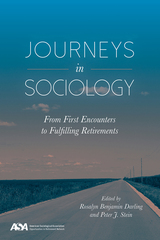 Journeys in Sociology: From First Encounters to Fulfilling Retirements
Rosalyn Benjamin Darling and Peter J. Stein
Temple University Press, 2017 For most sociologists, their life’s work does not end with retirement. Many professors and practitioners continue to teach, publish, or explore related activities after leaving academia. They also connect with others in the field to lessen the isolation they sometimes feel outside the ivory tower or an applied work setting. The editors and twenty contributors to the essential anthology Journeys in Sociology use a life-course perspective to address the role of sociology in their lives. The power of their personal experiences—during the Great Depression, World War II, or the student protests and social movements in the 1960s and ‘70s—magnify how and why social change prompted these men and women to study sociology. Moreover, all of the contributors include a discussion of their activities in retirement. From Bob Perrucci, Tuck Green, and Wendell Bell, who write about issues of class, to Debra Kaufman and Elinore Lurie, who explain how gender played a role in their careers, the diverse entries in Journeys in Sociology provide a fascinating look at both the influence of their lives on the discipline and the discipline on these sociologists’ lives. Contributors include: David J. Armor, Wendell Bell, Glen H. Elder, Jr., Henry W. Fischer, Janet Zollinger Giele, Charles S. (Tuck) Green, Peter Mandel Hall, Elizabeth Higginbotham, Debra Renee Kaufman, Corinne Kirchner, Elinore E. Lurie, Gary T. Marx, Robert Perrucci, Fred Pincus, Thomas Scheff, Arthur Shostak, David Simon, Natalie J. Sokoloff, Edward Tiryakian, Joyce E. Williams, and the editors. Published in collaboration with the American Sociological Association Opportunities in Retirement Network.
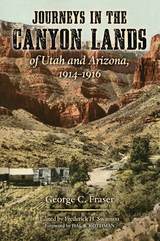 Journeys in the Canyon Lands of Utah and Arizona, 1914-1916
George C. Fraser; Edited by Frederick H. Swanson; Foreword by Hal K. Rothman
University of Arizona Press, 2005 George Corning Fraser, who lived in the days before automobile travel became a way of life, was an easterner who loved to vacation on horseback in the American Southwest. No mere tourist, he sought out the most remote and forbidding landscapes he could find: the seldom-visited country north of the Grand Canyon, the vast slickrock expanses of the Navajo Reservation, and sites such as Zion Canyon and Capitol Reef before they became national parks. An amateur geologist, Fraser penned his own memorable observations of the region’s landforms and jotted down engaging accounts of local ranchers, sheepherders, and villagers.
Frederick H. Swanson has edited Fraser’s voluminous journals into a single volume covering three trips taken from 1914 to 1916. As Fraser wades the bone-chilling waters of the Zion Narrows, crosses the Grand Canyon in midsummer heat, and rides through the trackless forest of the Aquarius Plateau, he conveys impressions of the land that will fascinate any reader who wonders what the canyon country was like before it became a popular tourist destination—and one that will inform historians interested in early accounts of the region. Accompanied by a selection of photographs taken by Fraser and his fellow travelers, Journeys in the Canyon Lands brings to life the Southwest’s breathtaking backcountry on the brink of discovery.
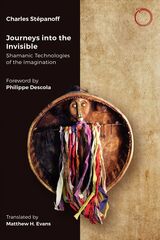 Journeys into the Invisible: Shamanic Technologies of the Imagination
Charles Stépanoff
HAU, 2025 A lively exploration of the Indigenous traditions of shamanism in the Far North of Eurasia and North America.
Charles Stépanoff draws on ethnographic literature and his fieldwork in Siberia to reveal the immense contribution to the scope of human imagination made by shamans and the cognitive techniques they developed over the centuries.
Northern Shamans travel in mind in ways that appear mysterious to Westerners, but which rely on the human capacity of imagination. They perceive themselves simultaneously in two types of space—one visible, the other invisible—putting them in contact and establishing links with non-human beings in their surroundings. Shamans share their experience of mind travel with their patients, families, or the wider community, allowing them to participate in their odyssey through the invisible. Stépanoff offers an anthropological reflection on the relationships between our uses of the imagination, our relationships with the environment, and the emergence of social hierarchies.
This work will appeal to anthropologists as well as to anyone interested in learning about the power of imagination from the masters of the invisible, the shamans of the Far North.
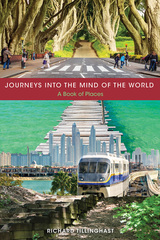 Journeys into the Mind of the World: A Book of Places
Richard Tillinghast
University of Tennessee Press
Renowned poet Richard Tillinghast’s wanderlust and restless spirit are nearly as well known as his verses. This book of essays captures that penchant to wander, yet Journeys into the Mind of the World is not merely a compilation of travel stories—it is a book of places. It explores these chosen locations—Ireland, England, India, the Middle East, Tennessee, Hawaii—in a deeper way than would be typical of travel literature, attempting to enter not just the world, but “the mind of the world”—the roots and history of places, their political and cultural history, spiritual, artistic, architectural, and ethnic dimensions.
Behind each essay is the presence, curiosity, and intelligence of the author himself, who uses his experience of the places he visits as a way of bringing the reader into the equation. Tillinghast illuminates his travels with a brilliant eye, a friendly soul, and eclectic knowledge of a variety of disparate areas—Civil War history, Venetian architecture, Asian cultures, Irish music, and the ways of out-of-the-way people. This attention to history and cultural embeddedness lends unique perspectives to each essay.
At the heart of his journeys are his deep roots in the South, tracing back to his hometown in Tennessee. The book explores not only Tillinghast’s childhood home in Memphis, but even the time before his birth when his mother lived in Paris. Readers will feel a sense of being everywhere at once, in a strange simultaneity, a time and place beyond any map or
guidebook.
RICHARD TILLINGHAST is the author of three recent books of poetry: Sewanee Poems (Evergreen, 2009; second edition, 2012), Selected Poems (Dedalus, Dublin, 2009), and Wayfaring Stranger (Word Palace, 2012). Among his nonfiction books are Finding Ireland (University of Notre Dame, 2008) and An Armchair Traveller’s History of Istanbul (Haus Publishing, London, 2012).
 Journeys into the Mind of the World: A Book of Places
Richard Tillinghast
University of Tennessee Press, 2015 Renowned poet Richard Tillinghast’s wanderlust and restless spirit are nearly as well known as his verses. This book of essays captures that penchant to wander, yet Journeys into the Mind of the World is not merely a compilation of travel stories—it is a book of places. It explores these chosen locations—Ireland, England, India, the Middle East, Tennessee, Hawaii—in a deeper way than would be typical of travel literature, attempting to enter not just the world, but “the mind of the world”—the roots and history of places, their political and cultural history, spiritual, artistic, architectural, and ethnic dimensions.
Behind each essay is the presence, curiosity, and intelligence of the author himself, who uses his experience of the places he visits as a way of bringing the reader into the equation. Tillinghast illuminates his travels with a brilliant eye, a friendly soul, and eclectic knowledge of a variety of disparate areas—Civil War history, Venetian architecture, Asian cultures, Irish music, and the ways of out-of-the-way people. This attention to history and cultural embeddedness lends unique perspectives to each essay.
At the heart of his journeys are his deep roots in the South, tracing back to his hometown in Tennessee. The book explores not only Tillinghast’s childhood home in Memphis, but even the time before his birth when his mother lived in Paris. Readers will feel a sense of being everywhere at once, in a strange simultaneity, a time and place beyond any map or guidebook.
RICHARD TILLINGHAST is the author of three recent books of poetry: Sewanee Poems (Evergreen, 2009; second edition, 2012), Selected Poems (Dedalus, Dublin, 2009), and Wayfaring Stranger (Word Palace, 2012). Among his nonfiction books are Finding Ireland (University of Notre Dame, 2008) and An Armchair Traveller’s History of Istanbul (Haus Publishing, London, 2012).
Journeys of a Mystic Soul in Poetry and Prose
Cecilia del Nacimiento
Iter Press, 2012 This edition, which offers a bilingual selection of poetry and selected prose translated into English by the nun-author Cecilia del Nacimiento (1570–1646), increases contemporary scholars’ access to, and therefore understanding of, the Spanish early modern religious and intellectual milieu. A significant, rarely-studied mystic and poet, and member of the Discalced Carmelite Order in the years after St. Teresa of Avila’s death, Cecilia del Nacimiento exemplifies the range of possibilities used by women writers who worked within the conventions of hegemonic discourses, while creating a unique literary voice.
—Stacey Schlau
Professor, Department of Languages and Culture and the Women’s Studies Program
West Chester University, Pennsylvania
 Journeys of Love: Kashmiris, Music, and the Poetics of Migration
Thomas Hodgson
University of Chicago Press, 2025 An empathetic and eye-opening portrait of Muslim migrants in England that debunks many misperceptions about their music and poetry.
In Journeys of Love, ethnomusicologist Thomas Hodgson offers a sensitive corrective to harmful portrayals of immigrants—specifically, Pakistanis living in England—as a self-segregating group prohibited from making music, a stereotype that has often resulted in violent Islamophobia. He argues that, in practice, these migrants—many of whom come from the Mirpur area of Azad Kashmir—occupy rich musical worlds, full of poetic metaphors, that are central to surviving migration and its attendant losses.
Hodgson shows how Mirpuris in England, as well as those who remain in Pakistan, carry on traditions of reciting a collection of poetry by the nineteenth-century Sufi saint Mian Muhammad Bakhsh, translated by Hodgson here as Journeys of Love. With its themes of remaining true to one’s home, the oppressed being saved, having patience, and keeping faith in God, this work has become the story of movement and displacement in its narrative arc, as well as through the way it provides spiritual and ethical frameworks for settling in new lands. These hidden poetics of migration transform across generations as young Mirpuris develop new expressions of the connections across continents. These poetics reveal the connections between Kashmir’s rural village life and urban centers abroad, offering a sensitive and illuminating portrait of migration and multiculturalism in Britain and beyond.
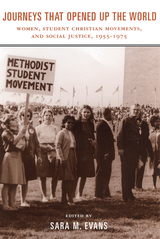 Journeys that Opened up the World: Women, Student Christian Movements, and Social Justice, 1955-1975
Evans, Sara M.
Rutgers University Press, 2003 This volume contains inspiring memoirs from sixteen women active in the civil rights movement, anti-war campaigns, and the rise of feminism in the Cold War era. It places religious activism at the center of social movements previously thought of as largely secular. For thousands of young women in the 1950s and 1960s, involvement with the student Christian movement (SCM) changed their worldviews. Religious organizations fostered women’s leadership at a time when secular groups like Students for a Democratic Society, and the Left in general, relegated most female participants to stereotypical roles. The SCM introduced young women to activism in other parts of the country and around the world. As leaders, thinkers, and organizers, they encountered the social realities of poverty and racial prejudice and worked to combat them. The SCM took women to Selma and Montgomery, to Africa and Latin America, and to a lifelong commitment to work for social justice.
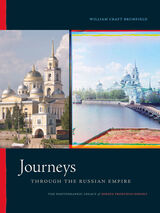 Journeys through the Russian Empire: The Photographic Legacy of Sergey Prokudin-Gorsky
William Craft Brumfield
Duke University Press, 2020 At the turn of the twentieth century, the photographer Sergey Prokudin-Gorsky undertook a quest to document an empire that was undergoing rapid change due to industrialization and the building of railroads. Between 1903 and 1916 Prokudin-Gorsky, who developed a pioneering method of capturing color images on glass plates, scoured the Russian Empire with the patronage of Nicholas II. Intrepidly carrying his cumbersome and awkward camera from the western borderlands over the Volga River to Siberia and central Asia, he created a singular record of Imperial Russia.
In 1918 Prokudin-Gorsky escaped an increasingly chaotic, violent Russia and regained nearly 2,000 of his bulky glass negatives. His subsequent peripatetic existence before settling in Paris makes his collection's survival all the more miraculous. The U.S. Library of Congress acquired Prokudin-Gorsky's collection in 1948, and since then it has become a touchstone for understanding pre-revolutionary Russia. Now digitized and publicly available, his images are a sensation in Russia, where people visit websites dedicated to them.
William Craft Brumfield—photographer, scholar, and the leading authority on Russian architecture in the West—began working with Prokudin-Gorsky's photographs in 1985. He curated the first public exhibition of them in the United States and has annotated the entire collection. In Journeys through the Russian Empire, Brumfield—who has spent decades traversing Russia and photographing buildings and landscapes in their various stages of disintegration or restoration—juxtaposes Prokudin-Gorsky's images against those he took of the same buildings and areas. In examining the intersections between his own photography and that of Prokudin-Gorsky, Brumfield assesses the state of preservation of Russia's architectural heritage and calls into question the nostalgic assumptions of those who see Prokudin-Gorsky's images as the recovery of the lost past of an idyllic, pre-Soviet Russia.
This lavishly illustrated volume—which features some 400 stunning full-color images of ancient churches and mosques, railways and monasteries, towns and remote natural landscapes—is a testament to two brilliant photographers whose work prompts and illuminates, monument by monument, questions of conservation, restoration, and cultural identity and memory.
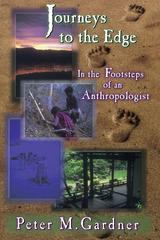 Journeys to the Edge: In the Footsteps of an Anthropologist
Peter M. Gardner
University of Missouri Press, 2013 In this fascinating and vivid account, Peter M. Gardner takes us along with him on his anthropological field research trips. Usually, the author’s family is there, too, either with him in the field or somewhere nearby. Family adventures are part of it all. Travel into the unknown can be terrifying yet stimulating, and Gardner describes his own adventures, sharing medical and travel emergencies, magical fights, natural dangers, playful friends, and satisfying scientific discoveries. Along the way, we also learn how Gardner adapted to the isolation he sometimes faced and how he coped with the numerous crises that arose during his travels, including his tiny son’s bout with cholera. Because Gardner’s primary research since 1962 has been with hunter-gatherers, much of his story transpires either in the equatorial jungle of south India or more than one hundred miles beyond the end of the road in Canada’s Northwest Territories. Other ventures transport readers to Japan and back to India, allowing them to savor ancient sights and sounds. Gardner closes the book with a journey of quite another sort, as he takes us into the world of nature, Taoist philosophy, and the experimental treatment of advanced cancer.
Throughout this fast-moving book, Gardner deftly describes the goals and techniques of his research, as well as his growing understanding of the cultures to which he was exposed. Few personal accounts of fieldwork describe enough of the research to give a complete sense of the experience in the way this book does. Anyone with an interest in travel and adventure, including the student of anthropology as well as the general reader, will be totally intrigued by Gardner’s story, one of a daily existence so very different from our own.
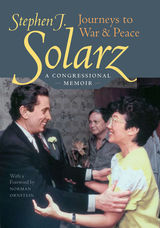 Journeys to War and Peace: A Congressional Memoir
Stephen J. Solarz
Brandeis University Press, 2011 In this remarkable book, recounting his long, influential career as a congressman from New York, Stephen Solarz gives an insider’s view of the life of a hard-working legislator in the forefront of democracy movements and human rights during a tumultuous time in our nation’s history. A member of the class of 1974, the so-called “Watergate” class, when 75 freshman Democrats were elected to the Congress, Solarz was part of the group that brought about a power shift in the House from an inner circle of senior committee chairs to a much larger group of subcommittee leaders. Early on he sought and won a seat on the House Foreign Affairs Committee, where he earned a reputation as an expert in international relations, traveling to more than 100 countries and meeting the likes of Anwar Sadat, Menachem Begin, Nelson Mandela, Indira Gandhi, Saddam Hussein, Kim Il Sung, and Robert Mugabe. Solarz gives fascinating, detailed descriptions of his role in bringing democracy to South Korea and Taiwan, the triumph of people power in the Philippines, the peace agreement in Cambodia, the abolition of apartheid in South Africa, and the adoption of the resolution authorizing the use of force in the first Gulf War. Written in an engaging style, Journeys to War and Peace will appeal to all who value the struggle for human rights and seek a better understanding between differing cultures and peoples.
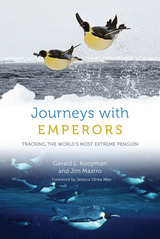 Journeys with Emperors: Tracking the World's Most Extreme Penguin
Gerald L. Kooyman and Jim Mastro
University of Chicago Press, 2023 With stunning photographs from the ice edge, a firsthand account of a researcher’s time in Antarctica and of the perilous journeys of the world’s largest penguin species: the iconic emperor. Nearly all emperor penguin colonies are extremely remote; of the sixty-six known, fewer than thirty have been visited by humans, and even fewer have been the subject of successful research programs. One of the largest known emperor penguin colonies is found on a narrow band of sea ice attached to the Antarctic continent. In Journeys with Emperors, Gerald L. Kooyman and Jim Mastro take us to this far-flung colony in the Ross Sea, showing us how scientists gained access to it, and what they learned while living among the penguins as they raised their chicks.
The primary mission was to record the birds’ activities at sea, and the data revealed important aspects of emperor penguin behavior and physiology: for instance, that in the course of hunting for food, some of the penguins dive to depths of greater than five hundred meters (a third of a mile, which is deeper than for any other diving bird). The researchers also discovered that, crucially, most of the emperor’s life is actually spent at sea, with fledged chicks and adults making separate, perilous journeys through icy water. When chick nurturing is complete, the fledglings abandon the colony in large groups, heading north to the Southern Ocean. The adults leave at the same time, traveling one thousand kilometers eastward across the Ross Sea to a sea-ice sanctuary for molting. During this journey, they must gain enough weight to survive the month-long molt, when every feather is replaced and the birds cannot enter the water to feed. After the molt, many if not most return to the colony to breed once again. For the males, this means another fast—this time for 120 days as they incubate their eggs. The nearness of the colony to the ice edge spared the penguins the long, energy-draining march for which other colonies are well-known. It also allowed researchers to observe the penguins’ departures to and arrivals from their foraging journeys, as well as their dangerous interactions with leopard seals and killer whales.
Featuring original color photographs and complemented with online videos, Journeys with Emperors is both an eye-opening overview of the emperor penguin’s life and a thrilling tale of scientific discovery in one of the most remote, harsh, and beautiful places on Earth.
 Journeys with Flies
Edwin N. Wilmsen
University of Chicago Press, 1999 From 1973 to 1994, anthropologist Edwin Wilmsen lived and worked among the Zhu, Mbanduru, and Tswana people of the Kalahari desert in southern Africa. Thousands of miles from his home, immersed in what first seemed a radically different place, and operating in languages he initially did not understand, he began a record of his impressions and reflections as a complement to his scientific fieldwork. Journeys with Flies weaves together the multilayered experiences of his life among these Kalahari people, capturing at once the intellectual challenges an anthropologist faces in the field and the myriad and strange ways that unfamiliar experiences come to resonate with deeply personal thoughts and recollections.
Combining biography, poetry, and anthropology, Wilmsen vividly portrays the intense realities of life in the Kalahari and carries the reader across space and time as events in the present trigger emotions and memories. Images of apartheid, for example, evoke memories of Wilmsen's childhood in the segregated South. Poems, journal entries, and moving accounts of deepening personal relationships all intertwine as Wilmsen conveys the experiences he shares with his "subjects" in spite of vast differences in their backgrounds—extreme thirst under the desert sun, grief over the death of a child, and the constant irritation of ubiquitous flies.
"Our understanding of other peoples," he writes, "lies not in themselves or in anything that they do but in our experience of them. Experience that is lived partly in their world and partly in a shell of our world that we wear when we meet them."
Sophisticated, lyrical, and passionately written, Journeys with Flies will inspire all those who travel to places far from home.
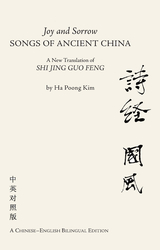 Joy and Sorrow - Songs of Ancient China: A New Translation of Shi Jing Guo Feng (A Chinese-English Bilingual Edition)
Ha Poong Kim
Sussex Academic Press, 2022 The Shi Jing is the oldest anthology of Chinese songs. It contains 305 songs of ancient China, composed in the 12th to 7th century BCE. The collection is divided into four parts. The present work is a translation of its first part, namely Guo Feng, which translates as "songs of states" within the Zhou kingdom (1122-255 BCE). The Guo Feng songs were mostly sung by the common people of the kingdom. In this respect, they are unlike the songs in the other three parts, which are generally dynastic songs of the Zhou court. The songs included in this translation predate Confucius, many by several centuries. Accordingly, through them one may hear the spontaneous voices of pre-Confucian China. The text of the Shi Jing has come down to us at the present time in familiar Chinese characters. But their usage is so ancient that for centuries even Chinese readers have had to rely on a few standard commentaries, which all gave Confucian, moralistic readings of the songs, even of those that are unmistakably simple love songs. Ha Poong Kim's translation has incorporated the results of some recent Japanese studies which question the traditional, Confucian approach to the text, thereby recovering the original meaning of many songs in the Guo Feng. It is hoped that this Chinese-English Bilingual Edition makes the voices of joys and sorrows of this ancient land audible to a modern readership, not only in the West but also in China as well. (History, Literary Criticism, Confucianism, Asian Studies)
 The Joy of Consent: A Philosophy of Good Sex
Manon Garcia
Harvard University Press, 2023 “From the bedroom to the classroom to the courtroom, ‘consent’ is a key term in our contemporary sexual ethics. In this timely reexamination, Manon Garcia deftly reveals the hidden complexities of consent and proposes how to reconceptualize it as a tool of liberation.”
—Amia Srinivasan, author of The Right to Sex
A feminist philosopher argues that consent is not only a highly imperfect legal threshold but also an underappreciated complement of good sex.
In the age of #MeToo, consent has become the ultimate answer to problems of sexual harassment and violence: as long as all parties agree to sex, the act is legitimate. Critics argue that consent, and the awkwardness of confirming it, rob sex of its sexiness. But that objection is answered with the charge that opposing the consent regime means defending a masculine erotics of silence and mystery, a pillar of patriarchy.
In The Joy of Consent, French philosopher Manon Garcia upends the assumptions that underlie this very American debate, reframing consent as an ally of pleasure rather than a legalistic killjoy. In doing so, she rejects conventional wisdom on all sides. As a legal norm, consent can prove rickety: consent alone doesn’t make sex licit—adults engaged in BDSM are morally and legally suspect even when they consent. And nonconsensual sex is not, as many activists insist, always rape. People often agree to sex because it is easier than the alternative, Garcia argues, challenging the simplistic equation between consent and noncoercion.
Drawing on sources rarely considered together—from Kantian ethics to kink practices—Garcia offers an alternative framework grounded in commitments to autonomy and dignity. While consent, she argues, should not be a definitive legal test, it is essential to realizing intimate desire, free from patriarchal domination. Cultivating consent makes sex sexy. By appreciating consent as the way toward an ethical sexual flourishing rather than a legal litmus test, Garcia adds a fresh voice to the struggle for freedom, equality, and security from sexist violence.
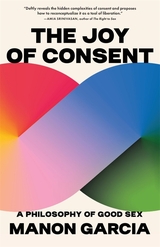 The Joy of Consent: A Philosophy of Good Sex
Manon Garcia
Harvard University Press A Seminary Co-op Notable Book
“Timely and captivating…advances a powerful critique against the contemporary discourse on consent…offers sharp observations throughout.” —Times Literary Supplement
“Thought-provoking…Garcia argues that we need an emancipatory sexual politics based on a deeper understanding of how social norms generate sexual injustices. Ultimately, she advocates a contextually sensitive approach to consent, a notion that responds to the specifics of sexual situations and is relational in nature.” —Los Angeles Review of Books
“A brilliant interrogation of the complexities of consent. Manon Garcia shows us that consent can be liberating—for reasons we might not have expected—in enabling good, joyful sex. A must-read.” —Kate Manne, author or Entitled: How Male Privilege Hurts Women
Consent has become the ultimate answer to problems of sexual harassment and violence: as long as all parties agree to sex, the act is legitimate. Critics reply that the awkwardness of confirming consent robs sex of its sexiness. Supporters answer that opposing the consent regime entails defending a patriarchal erotics of silence and mystery.
Philosopher Manon Garcia upends the debate, reframing consent as an ally of pleasure rather than a legalistic killjoy. In doing so, she rejects conventional wisdom on all sides. Garcia challenges simplistic equations between consent and noncoercion and shows that consent alone doesn’t make sex licit. Drawing on sources from Kantian ethics to kink practices, she offers an alternative framework grounded in commitments to autonomy and dignity. And if consent provides a rickety legal standard, Garcia argues that it is essential to the realization of intimate desire.
By appreciating consent as a source of sexual flourishing rather than a legal litmus test, The Joy of Consent adds a fresh voice to the struggle for freedom from sexist violence.
 The Joy of Playing, the Joy of Thinking: Conversations about Art and Performance
Charles Rosen and Catherine Temerson
Harvard University Press, 2020 Brilliant, practical, and humorous conversations with one of the twentieth-century’s greatest musicologists on art, culture, and the physical pain of playing a difficult passage until one attains its rewards.
Throughout his life, Charles Rosen combined formidable intelligence with immense skill as a concert pianist. He began studying at Juilliard at age seven and went on to inspire a generation of scholars to combine history, aesthetics, and score analysis in what became known as “new musicology.”
The Joy of Playing, the Joy of Thinking presents a master class for music lovers. In interviews originally conducted and published in French, Rosen’s friend Catherine Temerson asks carefully crafted questions to elicit his insights on the evolution of music—not to mention painting, theater, science, and modernism. Rosen touches on the usefulness of aesthetic reflection, the pleasure of overcoming stage fright, and the drama of conquering a technically difficult passage. He tells vivid stories about composers from Chopin and Wagner to Stravinsky and Elliott Carter. In Temerson’s questions and Rosen’s responses arise conundrums both practical and metaphysical. Is it possible to understand a work without analyzing it? Does music exist if it isn’t played?
Throughout, Rosen returns to the theme of sensuality, arguing that if one does not possess a physical craving to play an instrument, then one should choose another pursuit. Rosen takes readers to the heart of the musical matter. “Music is a way of instructing the soul, making it more sensitive,” he says, “but it is useful only insofar as it is pleasurable. This pleasure is manifest to anyone who experiences music as an inexorable need of body and mind.”
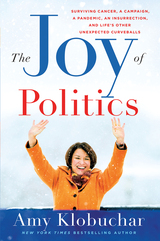 The Joy of Politics: Surviving Cancer, a Campaign, a Pandemic, an Insurrection, and Life’s Other Unexpected Curveballs
Amy Klobuchar
University of Minnesota Press, 2023 An intimate and revelatory memoir on personal challenges, political turmoil, and the state of American democracy―now in paperback with a new preface
During the past few years, as our country has faced unprecedented challenges, Senator Amy Klobuchar has been in the room where it happens―on the Senate floor for critical votes during the pandemic, at the debate podium during one of the most crucial presidential primaries in U.S. history, and in the Capitol on January 6, 2021, when insurrectionists stormed the building, interrupting the certification of the Electoral College. It was well past midnight when Klobuchar stood beside then–Vice President Pence to officially certify President Biden's victory. In her candid, honest, and at times bitingly funny memoir, the pragmatic senator shares insider stories from these historic moments, while also inviting readers into her personal life. An underdog in the 2020 Democratic presidential primary campaign, she built surprising early momentum, only to suspend her candidacy in order to support Joe Biden. Within weeks of returning to work in the Senate, the sudden onslaught of Covid-19 hit her family directly: her husband was hospitalized for a week and spent a month in isolation. Klobuchar shares her experience facing a cancer diagnosis while her beloved father succumbs to Alzheimer's. She recounts the dramatic narrative of January 6 and how close we came to losing our democracy. And, with her signature humor, she reveals what it's like to work with some of her more . . . well, interesting . . . colleagues. At the crux of these stories is a narrative of resilience—of personal resilience and the resilience of a nation—and, improbably, joy.
The Joy of Spiritual Growth: Real Encounters
Frank Rose and Robert Maginel
Swedenborg Foundation Publishers, 1999 Frank Rose and Bob Maginel provide people seeking spiritual growth and recovery a practical handbook for accomplishing their goals. Recognizing that spiritual growth can be stymied by materialism and external preoccupations, the authors offer tasks and exercises that can be used repeatedly to help tame the "wild beasts," the negative emotions that can control our lives and destroy our relationships with others. A special feature of the book is the "Reporting on the Task" section at the end of each of the twelve tasks, in which participants who were enrolled in a real-life twelve-week seminar share their struggles in their own words. Their successes and setbacks in applying the tasks to daily life underscore the ongoing nature of the recovery process and remind us that the joy of spiritual growth is linked to enjoying the journey.
 The Joy of Spiritual Living: Simple Steps to Your Best Self
Frank Rose and Robert Maginel
Swedenborg Foundation Publishers, 2014 Many people think of spiritual growth as solitary work that happens outside of everyday life. But through decades of group work, authors Frank Rose and Bob Maginel have developed a program of spiritual growth that works best in the midst of daily living.
Through a series of eight exercises, readers learn how to raise their awareness and their spirits to a higher level, to connect more readily with their Higher Power, and to unlock authentic spiritual joy even at life’s most challenging moments. For people working in groups, the authors include suggestions for structuring spiritual growth meetings and tools for discussion facilitators. For individuals using the book alone, Rose and Maginel provide transcripts of their own group’s discussions, challenges, and “Aha!” moments, so the reader can share in the group experience.
Building on their previous book, The Joy of Spiritual Growth, Rose and Maginel offer more of the gentle wisdom and practical techniques that have made their spiritual growth program an enduring success.
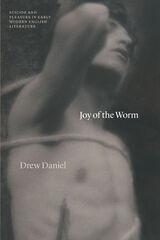 Joy of the Worm: Suicide and Pleasure in Early Modern English Literature
Drew Daniel
University of Chicago Press, 2022 Consulting an extensive archive of early modern literature, Joy of the Worm asserts that voluntary death in literature is not always a matter of tragedy.
In this study, Drew Daniel identifies a surprisingly common aesthetic attitude that he calls “joy of the worm,” after Cleopatra’s embrace of the deadly asp in Shakespeare’s play—a pattern where voluntary death is imagined as an occasion for humor, mirth, ecstatic pleasure, even joy and celebration.
Daniel draws both a historical and a conceptual distinction between “self-killing” and “suicide.” Standard intellectual histories of suicide in the early modern period have understandably emphasized attitudes of abhorrence, scorn, and severity toward voluntary death. Daniel reads an archive of literary scenes and passages, dating from 1534 to 1713, that complicate this picture. In their own distinct responses to the surrounding attitude of censure, writers including Shakespeare, Donne, Milton, and Addison imagine death not as sin or sickness, but instead as a heroic gift, sexual release, elemental return, amorous fusion, or political self-rescue. “Joy of the worm” emerges here as an aesthetic mode that shades into schadenfreude, sadistic cruelty, and deliberate “trolling,” but can also underwrite powerful feelings of belonging, devotion, and love.
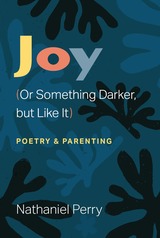 Joy (Or Something Darker, but Like It): poetry & parenting
Nathaniel Perry
University of Michigan Press, 2024 Joy (Or Something Darker, but Like It), the first book of nonfiction by poet Nathaniel Perry, is a group of essays that considers poetry in the context of parenting—what poems and poets might teach us about parenting, what parenting might teach us about poetry, and also, what either of those things might have to teach us about simply being a relatively successful human being. While other poets have written about parenthood, few books consider how parenthood and poetry themselves intersect. The essays are affable and never technical, but take seriously the idea that thinking about poems might help us all think about our other roles in life, as parents, lovers, citizens, and friends. The book, in the end, imagines that this kind of insight is maybe one of the things most useful about poetry. It isn't, or at least doesn't have to be, always about itself; it can instead, surprisingly and wonderfully, be about us.
Each of the twelve essays considers a different poet—Edward Thomas, Henry W. Longfellow, George Scarbrough, Elizabeth Bishop, Geoffrey Hill, Primus St. John, Robert Hayden, Elizabeth Coatsworth, Gwendolyn Brooks, Robert Frost, E.A. Robinson, and Belle Randall—and, alongside them, different concerns of parenting and living. Organized in chronological order, they track the growth of Nathaniel Perry’s own children who pop up from time to time in a believable way. Essays consider the idea of devotion and belief, the idea of imperfection, the small details we can focus on as parents, and the conceptions of the world we pass along to our children. Together these essays not only represent the author's personal canon of poets who have been important to him in his life and work, but also present a diverse slice of American poetry, in voice, form, identity, origin, and time period.
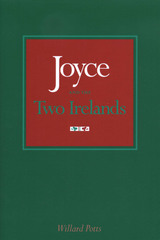 Joyce and the Two Irelands
By Willard Potts
University of Texas Press, 2001 Uniting Catholic Ireland and Protestant Ireland was a central idea of the "Irish Revival," a literary and cultural manifestation of Irish nationalism that began in the 1890s and continued into the early twentieth century. Yet many of the Revival's Protestant leaders, including W. B. Yeats, Lady Gregory, and John Synge, failed to address the profound cultural differences that made uniting the two Irelands so problematic, while Catholic leaders of the Revival, particularly the journalist D. P. Moran, turned the movement into a struggle for greater Catholic power. This book fully explores James Joyce's complex response to the Irish Revival and his extensive treatment of the relationship between the "two Irelands" in his letters, essays, book reviews, and fiction up to Finnegans Wake. Willard Potts skillfully demonstrates that, despite his pretense of being an aloof onlooker, Joyce was very much a part of the Revival. He shows how deeply Joyce was steeped in his whole Catholic culture and how, regardless of the harsh way he treats the Catholic characters in his works, he almost always portrays them as superior to any Protestants with whom they appear. This research recovers the historical and cultural roots of a writer who is too often studied in isolation from the Irish world that formed him.
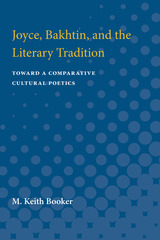 Joyce, Bakhtin, and the Literary Tradition: Toward a Comparative Cultural Poetics
M. Keith Booker
University of Michigan Press, 1997 Literary studies of James Joyce, perhaps more so than those of any other author, have been enriched by important developments in literary theory in the last twenty-five years. Noting a curious gap in this scholarship, M. Keith Booker brings the work of Mikhail Bakhtin, unquestionably one of the most important literary theorists of this century, to bear on Joyce's relationship to six of his literary predecessors. In clear and readable prose, Booker explores Joyce's dialogues not only with Homer, Dante, and Shakespeare, his three most obvious predecessors, but with Rabelais, Goethe, and Dostoevsky, three literary figures important in Bakhtin's theoretical work.
These six writers provide the opportunity to examine Joyce's work with regard to several of Bakhtin's most important concepts. If Homer represents the authority of epic, Rabelais represents for Bakhtin the subversive multivocal energies of carnivalesque genres. As opposed to his description of Dante's attempts to escape from historicity, Bakhtin figures Goethe as the epitome of engagement with the temporality of everyday history. And Bakhtin's generic denial of polyphony in the works of Shakespeare contrasts with Bakhtin's identification of Dostoevsky as the most polyphonic writer in all the world of literature.
Together, Booker's comparative readings suggest a Joyce whose works are politically committed, historically engaged, and socially relevant. In short, they suggest a Joyce whose work differs radically from conventional notions of modernist literature as culturally elitist, historically detached, and more interested in individual psychology than in social reality.
M. Keith Booker is Professor of English, University of Arkansas.
Joyce Cary: The Comedy of Freedom
Charles G. Hoffmann
University of Pittsburgh Press, 1964 Joyce Cary (1888-1957) read law at Oxford University, worked with the Red Cross the Balkan Wars, and served in Nigeria and Cameroon during World War I. In 1920, Cary moved to Oxford, where he began writing short stories and novels. His first four novels, set in Africa, drew heavily from his experiences in Nigeria. Mister Johnson, published in 1939, is generally regarded as his greatest novel. Charley Is My Darling (1940), about displaced young people at the start of World War II, found a wide readership, and A House of Children (1941) won the James Tait Black Memorial Prize for best novel. Cary also wrote a trilogy about an artist named Gulley Jimson; Herself Surprised (1941), To Be a Pilgrim (1942) and The Horse’s Mouth (1944), and, in the 1950s, a second trilogy: Prisoner of Grace, Except the Lord, and Not Honour More.
 Joyce, Chaos, and Complexity
Thomas Jackson Rice
University of Illinois Press, 1997 Thomas Rice compellingly argues that James Joyce's work resists postmodernist approaches of ambiguity: Joyce never abandoned his conviction that reality exists, regardless of the human ability to represent it.
Placing Joyce in his cultural context, Rice first traces the influence of Euclidean and non-Euclidean geometries on Dubliners and A Portrait of the Artist as a Young Man. He then demonstrates that, when later innovations in science transformed entire worldviews, Joyce recognized conventional literary modes of representation as offering only arbitrary constructions of this reality. Joyce responded in Ulysses by experimenting with perspective, embedding design, and affirming the existence of reality. Rice contends that Ulysses presages the multiple tensions of chaos theory; likewise, chaos theory can serve as a model for understanding Ulysses. In Finnegans Wake Joyce consummates his vision and anticipates the theories of complexity science through a dynamic approximation of reality.
 The Joyce of Everyday Life
Vicki Mahaffey
Bucknell University Press, 2024 Winner of the American Conference on Irish Studies’ Robert Rhodes Prize for Books on Literature
Part of James Joyce’s genius was his ability to find the poetry in everyday life. For Joyce, even a simple object like a table becomes magical, “a board that was of the birchwood of Finlandy and it was upheld by four dwarfmen of that country but they durst not move more for enchantment.” How might we learn to regain some of the childlike play with language and sense of delight in the ordinary that come so naturally to Joyce?
The Joyce of Everyday Life teaches us how to interpret seemingly mundane objects and encounters with openness and active curiosity in order to attain greater self-understanding and a fuller appreciation of others. Through a close examination of Joyce's joyous, musical prose, this book shows how language provides us with the means to revitalize daily experience and social interactions across a huge, diverse, and everchanging world.
Acclaimed Joyce scholar Vicki Mahaffey demonstrates how his writing might prompt us to engage in a different kind of reading, treating words and fiction as tools for expanding the boundaries of the self with humor and feeling. A book for everyone who loves language, The Joyce of Everyday Life is a lyrical romp through quotidian existence.
Joyce: Second Edition
Ian Pindar
Haus Publishing, 2025 A timeless study of a man who revolutionized the literary landscape.
James Joyce (1882–1941) is hailed as one of the greatest writers of the twentieth century. Rejecting his homeland and its religion as a young man, Joyce went on to reinvent the Dublin of his youth in his fiction. His masterpiece, Ulysses—once banned in Britain and the United States—redefined the modern novel and has become a canonical classic. Finnegans Wake, written as Joyce’s eyesight deteriorated, cemented his legacy as one of the founding figures of modernist literature.
In a revised edition of this lucid and compelling biography, containing a new foreword from the author, crucial events in Joyce’s life, from his self-imposed exile to his creative triumphs, are explored vividly. Ian Pindar reveals how Joyce’s work carefully blends the abstract and the mundane, capturing the great human comedy of which we are all part.
 Joyce Westerman: Baseball Hero
Bob Kann
Wisconsin Historical Society Press, 2012 Joyce Westerman grew up on a farm in Pleasant Prairie, Wisconsin. As a kid, she cleaned the barn, picked vegetables, and helped her father cut down trees. But what she really loved to do was play baseball. Joyce played ball at recess and with friends whenever she could. She even joined her aunt’s adult softball team when she was only twelve. As Joyce got older, she went to work at a factory in Kenosha. But when World War II broke out, she got a chance to try out for the All American Girls Professional Baseball League. Women from all over the country signed up to show off their skills. Only a few were good enough, and Joyce was one of them. For eight years, Joyce travelled around the United Stated playing ball, winning the league championship in her last season. This addition to the Badger Biographies series for young readers tells the story of a woman who lived her dream of becoming a professional athlete. In a time when women had few opportunities for careers, and next to none in professional sports, Joyce and her teammates showed that women have what it takes.
Joyce/Foucault: Sexual Confessions
Wolfgang Streit
University of Michigan Press, 2004 Sheds new light on James Joyce's use of sexual motifs as cultural raw material for Ulysses and other works
Joyce/Foucault: Sexual Confessions examines instances of sexual confession in works of James Joyce, with a special emphasis on Portrait of the Artist as a Young Man and Ulysses. Using Michel Foucault's historical analysis of Western sexuality as its theoretical underpinning, the book foregrounds the role of the Jesuit order in the spread of a confessional force, and finds this influence inscribed into Joyce's major texts. Wolfgang Streit goes on to argue that the tension between the texts' erotic passages and Joyce's criticism of even his own sexual writing energizes Joyce's narratives-and enables Joyce to develop the radical skepticism of power revealed in his work. Wolfgang Streit is Lecturer, Ludwig Maximilians University, Munich.
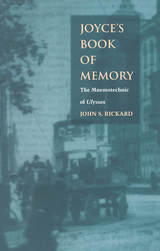 Joyce's Book of Memory: The Mnemotechnic of Ulysses
John S. Rickard
Duke University Press, 1999 For James Joyce, perhaps the most crucial of all human faculties was memory. It represented both the central thread of identity and a looking glass into the past. It served as an avenue into other minds, an essential part of the process of literary composition and narration, and the connective tissue of cultural tradition. In Joyce’s Book of Memory John S. Rickard demonstrates how Joyce’s body of work—Ulysses in particular—operates as a “mnemotechnic,” a technique for preserving and remembering personal, social, and cultural pasts.
Offering a detailed reading of Joyce and his methods of writing, Rickard investigates the uses of memory in Ulysses and analyzes its role in the formation of personal identity. The importance of forgetting and repression, and the deadliness of nostalgia and habit in Joyce’s paralyzed Dublin are also revealed. Noting the power of spontaneous, involuntary recollection, Rickard locates Joyce’s mnemotechnic within its historical and philosophical contexts. As he examines how Joyce responded to competing intellectual paradigms, Rickard explores Ulysses’ connection to medieval, modern, and (what would become) postmodern worldviews, as well as its display of tensions between notions of subjective and universal memory. Finally, Joyce’s Book of Memory illustrates how Joyce distilled subjectivity, history, and cultural identity into a text that offers a panoramic view of the modern period.
This book will interest students and scholars of Joyce, as well as others engaged in the study of modern and postmodern literature.
Joyce's Book of the Dark: Finnegans Wake
John Bishop
University of Wisconsin Press, 1993 “Joyce’s Book of the Dark gives us such a blend of exciting intelligence and impressive erudition that it will surely become established as one of the most fascinating and readable Finnegans Wake studies now available.”—Margot Norris, James Joyce Literary Supplement
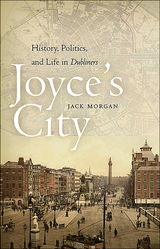 Joyce's City: History, Politics, and Life in DUBLINERS
Jack Morgan
University of Missouri Press, 2014 In 1914, James Joyce published Dubliners, a collection of short stories depicting life in Dublin at the turn of the century. One hundred years later, readers and critics alike continue to return to this book, Joyce's first major work. One of these critics is Jack Morgan, whose study Joyce’s Cityoffers refreshing readings on the occasion of the Dubliners centennial. Joyce’s City examines these now classic stories, a number of which are regarded as without equal in English literature, in terms of their historical and political contexts and often from markedly original perspectives. Morgan demonstrates, for example, the influence of American literature on “The Dead”--notably Washington Irving’s influence—and also traces the rich vein of Gothicism prevalent in Joyce’s work from Dubliners through Ulysses. While evidencing copious research and extensive literary knowledge, Joyce’s City is set forth with a clarity that makes it as pleasurable to read as it is informative.
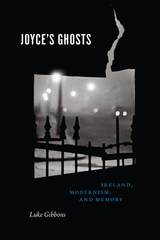 Joyce's Ghosts: Ireland, Modernism, and Memory
Luke Gibbons
University of Chicago Press, 2015 For decades, James Joyce’s modernism has overshadowed his Irishness, as his self-imposed exile and association with the high modernism of Europe’s urban centers has led critics to see him almost exclusively as a cosmopolitan figure.
In Joyce’s Ghosts, Luke Gibbons mounts a powerful argument that this view is mistaken: Joyce’s Irishness is intrinsic to his modernism, informing his most distinctive literary experiments. Ireland, Gibbons shows, is not just a source of subject matter or content for Joyce, but of form itself. Joyce’s stylistic innovations can be traced at least as much to the tragedies of Irish history as to the shock of European modernity, as he explores the incomplete project of inner life under colonialism. Joyce’s language, Gibbons reveals, is haunted by ghosts, less concerned with the stream of consciousness than with a vernacular interior dialogue, the “shout in the street,” that gives room to outside voices and shadowy presences, the disruptions of a late colonial culture in crisis.
Showing us how memory under modernism breaks free of the nightmare of history, and how in doing so it gives birth to new forms, Gibbons forces us to think anew about Joyce’s achievement and its foundations.
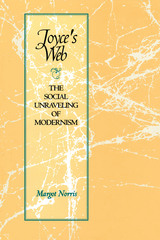 Joyce's Web: The Social Unraveling of Modernism
By Margot Norris
University of Texas Press, 1992 James Joyce has long been viewed as a literary modernist who helped define and uphold modernism's fundamental concepts of the artist as martyr to bourgeois sensibilities and of an idealistic faith in artistic freedom. In this revolutionary work, however, Margot Norris proposes that Joyce's art actually critiques these modernist tenets by revealing an awareness of the artist's connections to and constraints within bourgeois society. In sections organized around three mythologized and aestheticized figures in Joyce's works—artist, woman, and child—Norris' readings "unravel the web" of Joyce's early and late stories, novels, and experimental texts. She shows how Joyce's texts employ multiple mechanisms to expose their own distortions, silences, and lies and reveal connections between art and politics, and art and society. This ambitious new reading not only repositions Joyce within contemporary debates about the ideological assumptions behind modernism and postmodernism, but also urges reconsideration of the phenomenon of modernism itself. It will be of interest and importance to all literary scholars.
Joyful Orphan: Poems
Mark Irwin
University of Nevada Press, 2023 Through poems of witness, species and habitat extinction, war, pandemic, technology, history, and race, Mark Irwin’s elegant collection of poetry explores the collision between metropolis and wilderness, and engages with forms of spirit that cannot be bound. With the incursion of electronic communication, our connections with one another have been radically distorted. Irwin’s poems confront what it means to be human, and how conflict, along with the interface between technology and humanity, can cause us to become orphaned in many different ways. But it is our decision to be joyful.
Excerpt from “Letter”
Times when we touch hope like the hem of a cloud
just as when we touch a body or door, or think
of the dead come back, romancing
us through the warp of memory, lighting a way
by luring . . .
 Joyriders: Stories
Greg Schutz
University of Massachusetts Press, 2025 In this collection of stories set across the Midwest and rural Appalachia, lonely people travel half-haunted landscapes and discover moments of light.
In this debut collection, tangled bonds of love and family collide with a natural world both fragile and ferocious. Upended by grief, a widowed veterinarian seeks solace by fostering a litter of orphaned opossums. A young lawyer embarks on an affair, only to fall into a deeper, stranger entrancement with her lover’s nine-year-old daughter during a weekend on the Lake Huron coast. In the depths of a Wisconsin winter, a recovering alcoholic risks everything to plot a careening course toward atonement. And in the title story, two teenagers steal a car, discover a loaded rifle in the backseat, and set off consequences both devastating and tender for a series of strangers they’ll never meet.
Set across the Midwest and rural Appalachia, the stories in Joyriders offer a resonant vision of rural and small-town life: lonely, half-haunted landscapes are pierced with moments of light, and even the most taciturn faces conceal inner worlds both rich and strange. Comfort and heartache abound—entangled, inseparable. “What was Kevin suggesting,” wonders Valerie, after struggling for years to steer her innocent, angry, mysteriously afflicted son through the world, “that she loved him less because of his troubles? Oh, preposterous. More, she wanted to tell him, more.” Characters’ paths repeatedly bend in unforeseen directions, and the shape of each story surprises—illuminating, in this way, the surprising contours of entire lives.
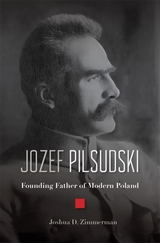 Jozef Pilsudski: Founding Father of Modern Poland
Joshua D. Zimmerman
Harvard University Press, 2022 The story of the enigmatic Jozef Pilsudski, the founding father of modern Poland: a brilliant military leader and high-minded statesman who betrayed his own democratic vision by seizing power in a military coup.
In the story of modern Poland, no one stands taller than Jozef Pilsudski. From the age of sixteen he devoted his life to reestablishing the Polish state that had ceased to exist in 1795. Ahead of World War I, he created a clandestine military corps to fight Russia, which held most Polish territory. After the war, his dream of an independent Poland realized, he took the helm of its newly democratic political order. When he died in 1935, he was buried alongside Polish kings.
Yet Pilsudski was a complicated figure. Passionately devoted to the idea of democracy, he ceded power on constitutional terms, only to retake it a few years later in a coup when he believed his opponents aimed to dismantle the democratic system. Joshua Zimmerman’s authoritative biography examines a national hero in the thick of a changing Europe, and the legacy that still divides supporters and detractors. The Poland that Pilsudski envisioned was modern, democratic, and pluralistic. Domestically, he championed equality for Jews. Internationally, he positioned Poland as a bulwark against Bolshevism. But in 1926 he seized power violently, then ruled as a strongman for nearly a decade, imprisoning opponents and eroding legislative power.
In Zimmerman’s telling, Pilsudski’s faith in the young democracy was shattered after its first elected president was assassinated. Unnerved by Poles brutally turning on one another, the father of the nation came to doubt his fellow citizens’ democratic commitments and thereby betrayed his own. It is a legacy that dogs today’s Poland, caught on the tortured edge between self-government and authoritarianism.
JPE vol 121 num 1
The University of Chicago Press
University of Chicago Press Journals, 2013
JPE vol 121 num 2
The University of Chicago Press
University of Chicago Press Journals, 2013
JPE vol 121 num 3
The University of Chicago Press
University of Chicago Press Journals, 2013
JPE vol 121 num 4
The University of Chicago Press
University of Chicago Press Journals, 2013
JPE vol 121 num 5
The University of Chicago Press
University of Chicago Press Journals, 2013
JPE vol 121 num 6
The University of Chicago Press
University of Chicago Press Journals, 2013
JPE vol 122 num 1
The University of Chicago Press
University of Chicago Press Journals, 2014
JPE vol 122 num 2
The University of Chicago Press
University of Chicago Press Journals, 2014
JPE vol 122 num 3
The University of Chicago Press
University of Chicago Press Journals, 2014
JPE vol 122 num 4
The University of Chicago Press
University of Chicago Press Journals, 2014
JPE vol 122 num 5
The University of Chicago Press
University of Chicago Press Journals, 2014
JPE vol 122 num 6
The University of Chicago Press
University of Chicago Press Journals, 2014
JPE vol 123 num 1
The University of Chicago Press
University of Chicago Press Journals, 2015
JPE vol 123 num 2
The University of Chicago Press
University of Chicago Press Journals, 2015
JPE vol 123 num 3
The University of Chicago Press
University of Chicago Press Journals, 2015
JPE vol 123 num 4
The University of Chicago Press
University of Chicago Press Journals, 2015
JPE vol 123 num 5
The University of Chicago Press
University of Chicago Press Journals, 2015
JPE vol 123 num 6
The University of Chicago Press
University of Chicago Press Journals, 2015
JPE vol 124 num 1
The University of Chicago Press
University of Chicago Press Journals, 2016
JPE vol 124 num 2
The University of Chicago Press
University of Chicago Press Journals, 2016
JPE vol 124 num 3
The University of Chicago Press
University of Chicago Press Journals, 2016
JPE vol 124 num 4
The University of Chicago Press
University of Chicago Press Journals, 2016
JPE vol 124 num 5
The University of Chicago Press
University of Chicago Press Journals, 2016
JPE vol 124 num 6
The University of Chicago Press
University of Chicago Press Journals, 2016
JPE vol 125 num 1
The University of Chicago Press
University of Chicago Press Journals, 2017
JPE vol 125 num 2
The University of Chicago Press
University of Chicago Press Journals, 2017
JPE vol 125 num 3
The University of Chicago Press
University of Chicago Press Journals, 2017
JPE vol 125 num 4
The University of Chicago Press
University of Chicago Press Journals, 2017
JPE vol 125 num 5
The University of Chicago Press
University of Chicago Press Journals, 2017
JPE vol 125 num 6
The University of Chicago Press
University of Chicago Press Journals, 2017
JPE vol 126 num 1
The University of Chicago Press
University of Chicago Press Journals, 2018
JPE vol 126 num 2
The University of Chicago Press
University of Chicago Press Journals, 2018
JPE vol 126 num 3
The University of Chicago Press
University of Chicago Press Journals, 2018
JPE vol 126 num 4
The University of Chicago Press
University of Chicago Press Journals, 2018
JPE vol 126 num 5
The University of Chicago Press
University of Chicago Press Journals, 2018
JPE vol 126 num 6
The University of Chicago Press
University of Chicago Press Journals, 2018
|
|

